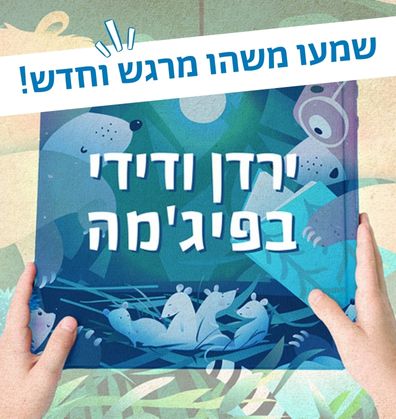סְּפָרִים
Book-Related Family Activities

טיפ לקריאה משפחתית
לאחר הקריאה כדאי לשוחח על רגשותיהם של גיבורי הספר ועל ההתמודדות שלהם עם מצבים שעלו בסיפור, ולהציע לשאוב מהם השראה. ילדות וילדים מזדהים עם הדמויות בסיפור, נחשפים לנקודות מבט שונות ולומדים מהן על רגשות ועל התנהגויות שהם מכירים מחייהם.
Next in Line

"זה היה רעיון טוב לתת לו להיכנס ראשון"
בעקבות הסיפור תוכלו לשוחח, לשתף ולשאול: מה מרגישים כשמחכים בתור? האם גם לנו קרה שהרגשנו שהתור שלנו דחוף יותר משל אחרים? כיצד לדעתכם כלבלב הרגיש כשהתחשבו בו? כיצד חשו קופיף ושאר הממתינים לאחר שוויתרו על תורם? נסו להיזכר יחד במקרה שהתחשבו בכם או שאתם התחשבתם באחר.
Next in Line

מי הבא בתור?
קופיף, ג’ירפה, פיל ותנינה מנסים למצוא עיקרון שיקבע את סדר התור. בהשראתם תוכלו לשחק משחק משעשע עם כל בני המשפחה שבו עליכם להסתדר בכל פעם לפי סדר אחר. כך למשל תוכלו להסתדר לפי סדר הגילים מהצעיר למבוגר או לפי צבע החולצה מהבהיר לכהה, ואולי לפי עד כמה אתם אוהבים גלידה. אפשר להמציא יחד מאפיינים שונים ומשעשעים ולבדוק – מי הבא בתור עכשיו?
Next in Line

ממתינים ונהנים
כיצד בסופו של דבר קופיף העביר את זמן ההמתנה? הוא שוחח עם אלו שהמתינו איתו, העלה רעיונות לסדר התור והכיר חברים חדשים. גם אתם יכולים לחשוב יחד ולהעלות רעיונות שיסייעו לכם להנעים את הזמן כשאתם מחכים למשהו. תוכלו להמציא שיר משעשע שאפשר לשיר במצבי המתנה, משחק תנועות עם האצבעות, ואפילו להכין עזרים שיסייעו לכם להעביר את הזמן – ספר, חוברת ציורים, חידות, כדור מחיץ. או כל רעיון משעשע אחר שיעלה על דעתכם.
Next in Line
האזינו לסיפור "הבא בתור"
רוצים לדעת איך נשמע קופיף? ואיך נשמעת ד”ר צביה? האזינו לסיפור.
Next in Line

Family reading advice
Illustrations are an integral part of books, completing details that are not always found in the text itself. For instance, the building blocks Taylor uses only appear in the illustrations. Did you discover any other details through the illustrations? Sometimes, it’s worth trying to read a story “over again” using the illustrations and seeing what else we can discover about.
The Rabbit Listened

Discussion – When things fall apart
Sometimes, things we put a lot of time and effort into fall apart or fail. We can discuss that by asking – Has anything similar to what happened to Taylor ever happened to you? How did you feel? When you’re upset or frustrated – what helpscheer you up? Which of the animals in the book would you have called out to for help?
The Rabbit Listened

The Rabbit Listened

Listening exercises
Listening exercises can help us sharpen our senses and notice new things: Try speaking to one another while sitting back-to-back, and then face-to-face. How did you feel each time? Another exercise is: Close your eyes for one minute, be completely silent and still, and try only to listen to the sounds around you. When the time is up, tell the others what you heard.
The Rabbit Listened

Animal mimicking
What does the ostrich look like when it buries its head in the sand? What does the elephant do with its trunk when it remembers? And what does the bear look like when it is angry? Try mimicking each of the animals in the book by copying its movements, sounds and suggested solutions.
The Rabbit Listened

More arts & crafts, songs and other activities can be found on the Sifriyat Pijama .Pinterest page
The Rabbit Listened

Family reading advice
Books that describe familiar experiences in children’s lives are an opportunity for a glimpse into their world. While reading, you should pay attention to what the children notice most, the questions they ask, and the characters with which they identify. Sometimes, books make it easier to discuss things that happen in real life.
Best Friends

Discussion – Joining the game
Discuss with and ask the children: how do you think Birt felt when Shu joined their game? Have you ever played with a friend and had another person ask to join in? Have you ever asked to join other children?
Best Friends
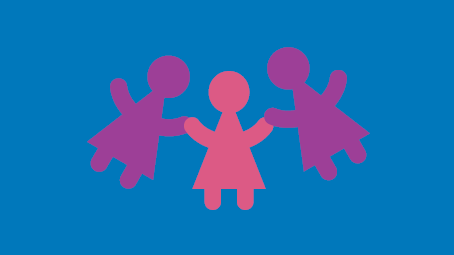
Arts & crafts with friends
Good friends can make a simple box into a palace, boat, or spaceship. You can suggest inviting one or several friends over for some joint arts & crafts time. Perhaps they will discover what else a box can turn into – with a little imagination, a pair of scissors, some markers, but most importantly – lots of togetherness.
Best Friends

Now Birt, then Shu, then Etho
Playacting is a great way of learning about the experience of others while expressing feelings and sensations. You can act this story out with the help of various family members or toys. Take turns playing each role, so that you can experience the story from the different characters’ perspectives.
Best Friends

More arts & crafts, songs and activities can be found on the Sifriyat Pijama Pinterest page.
Best Friends

Tips for family reading
This is a special book that delicately addresses coping with a friend’s complex physical or emotional state. We recommend that parents read this book before reading it together with their child in order to adjust the reading and discussion to the book’s unique content, and the child’s unique world.
The Boy with Flowers in His Hair

“And I found a way”
David’s friend immediately notices when David’s behavior changes. You can discuss and share: Have you ever noticed when someone you have been close began to act differently? What did you do? What do you think about what Davd’s friend did?
The Boy with Flowers in His Hair

Paper flowers – a kind gesture and a good word
Invite your child to make a colorful floral crown that would bring joy to your family. Suggest that your child cut out paper flowers and decorate them, and then write a kind word about each .family member
The Boy with Flowers in His Hair

A “just in case” box
What comforts and cheers you up during difficult times? A kind word? A touching book? Perhaps a toy? You can make a box filled with “just in case” ideas: Items that cheer you up, encouraging messages, and kind words.
The Boy with Flowers in His Hair

A hug in a letter
Does your child have a friend or family member who is coping with a complex physical or emotional condition? You can suggest that your child write that friend or relative a letter of encouragement. Use supportive words, such as: I’m here for you; you’re strong; we’re your friends; and we love you. You can add a drawing that will put a smile on their face too.
The Boy with Flowers in His Hair

Arts & crafts, songs, and other activities can be found on the Sifriyat Pijama Pinterest page.
The Boy with Flowers in His Hair
Family reading advice – From book to life
Books can help us cope with challenging situations: Toddlers identify with book characters and, as a result, learn about emotions, behaviors and challenges that exist both in books and in real life. In situations that are similar to those presented in the book, you can remind your toddlers of the book characters, and suggest that they be inspired by them and behave in a similar way: “Do you think we can maybe shift a little on the bench, and make room for our friends, just like the bears in the book did?”
Bears on Chairs
מה קורה בסיפור?
You can discuss what is happening in the book with your toddlers – which problem did the bears encounter? Why didn’t the bear have anywhere to sit? What did the other bears do? You can also address the feelings that emerge from the book: How did the bear feel when he had nowhere to sit? Was he happy, sad, or perhaps surprised or confused?
Bears on Chairs
Reading the illustrations
You can learn, play, and have fun using the illustrations. You can look for a different detail in them every time – can you spot the pink bear? Where’s the spotted bear? Where is the big bear and where is the little bear?
You can swap roles, and let your toddlers beckon you to search for details in the illustrations.
Bears on Chairs
Like a bear
You can turn the pages of this book and pause at a different page each time to look at the bears and try to copy their movement, sitting posture, and facial expressions so that yours are exactly like the ones depicted in the illustration.
Bears on Chairs
You can find more activities and special ideas on the Sifriyat Pijama for Toddlers Pinterest page.
Bears on Chairs

Connections
You can talk about older people you know or knew in the past: Who are they? What is your connection to them? What do you like doing with them now? What memories do you, the parents, have of older figures from your childhood?
It’s Our Birthday
Story time
Want to listen to the story? Scan the QR code and you can listen to the story together while turning the pages, at home, in the car or whenever you have time.
It’s Our Birthday

Hello Your Majesty
Amira suggests playing a game she played as a child – so can you! How do you play? One participant is the king and the rest are his children coming for a visit. They greet him with “Hello, Your Majesty”. The king replies: “Hello my dear children? Where have you been and what have you been doing?”
The children must explain where they were and what they did in mime, and the king must guess correctly. Then they switch roles.
It’s Our Birthday

It’s Our Birthday

Party time
Alma is planning a magic party with a magic hat and a magic potion, and invites witches and wizards to join. You can plan a magic party as well, with your own magical ideas. And maybe it will be a “resting” party? Or a game party? Or another themed party of your choice?
It’s Our Birthday
Real or imaginary?
Telling and listening to stories is great fun. The shared experience makes everyone feel good. Discuss and think together – when is the right time for story-telling and letting your imagination run wild. When is it best to tell the story like it is — without adding or leaving out any details? Who would you feel comfortable confiding in when you face dilemmas?
Let Me Tell You a Story
What happened to me yesterday
Who can remember what happened yesterday? Can you tell it like a story? You can use this opportunity to share experiences. You can also play: One of the participants will tell a story, while the others try to figure out what is true and which parts are made up.
Let Me Tell You a Story

Here is where we listen
Whenever Shahar wants to share or consult, she sits on the bench with Herzl, the security guard, and he always listens. Choose a spot at home where you can always speak and be heard. Whenever you need to share, sit there, tell your story, and seek advice.
Let Me Tell You a Story

More arts & crafts, songs and activities can be found on the Sifriyat Pijama Pinterest page
Let Me Tell You a Story
Let me tell you a story
Do you want to listen to Shahar’s stories too? Scan the QR code and listen away.
Let Me Tell You a Story

Family reading advice
Reading a book together can evoke thoughts, feelings and emotions in children: Like the young bird, they can feel small and fragile; like Efrat, they can feel misunderstood, or determined to go on doing what they believe is right. We recommend sitting close together, and accompanying the reading with a soothing stroke: Touch brings parents and children closer together, and strengthens children’s faith that they have someone who supports them, and is attentive to the feelings that the book evokes in them.
Little Peanut

Getting bigger
Little Peanut is getting bigger, and Efrat, who is discovering independence and responsibility, is getting bigger too. You can discuss and ask your children what makes them bigger and more responsible than they were before – are they taking care of a pet, for example? Doing things on their own? Helping their friends and around the house? We recommend always reminding children about the areas in which you, as parents, see that they have made progress and grown. Doing so makes children feel good, and bolsters their self-confidence.
Little Peanut

Helping animals
You can also help the animals in your surroundings: You can make a feeding station for birds containing crumbs; place a water bowl for cats; make a sign protecting an anthill, or think of your own ways of helping the animals in your surroundings.
Little Peanut

Where are the animals?
The illustrations in this book depict various animals – some are stuffed, drawn or playthings, some are real, while others appear in the children’s thoughts. Can you find them?
Little Peanut

Jumping, skipping, flying
Do you like to move? Look at the page on which Little Peanut learns how to fly, and try to move along with the story: You can grow wings, hop, skip, or even try to pretend to fly.
Little Peanut

More arts & crafts, songs and other activities can be found on the Sifriyat Pijama Pinterest page
Little Peanut
Pinterest – Crafts, songs and other activities on the “Elik Belik” book page in Sifriyat Pijama on Pinterest
Elik Belik
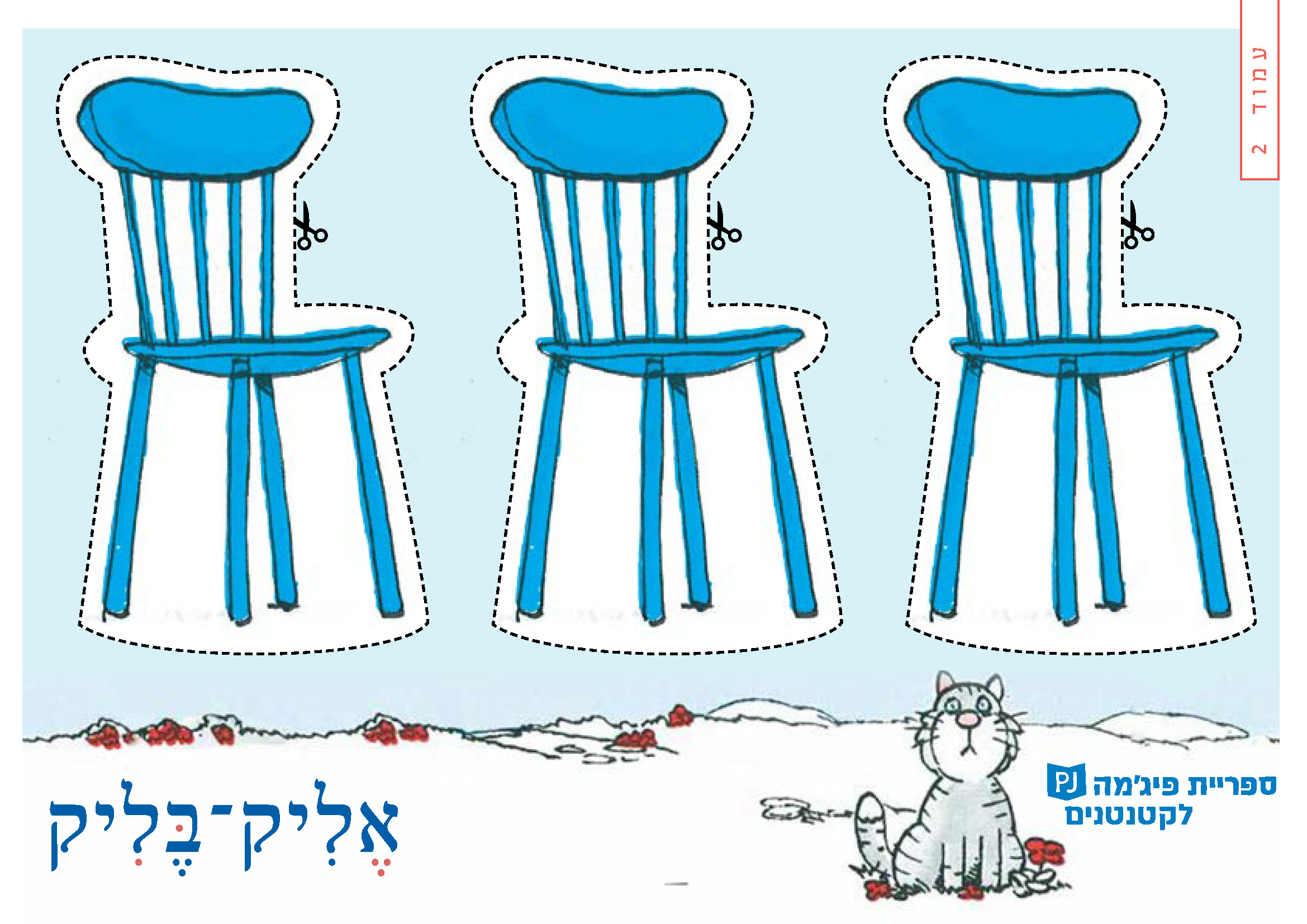
Reading Together
Do you also have little friends visiting your home? Are they imaginary friends, or maybe a beloved doll? It is worthwhile to talk about it with the toddlers and hear what do they like doing with the little friend. You can “bring in” the little friend to join and read the story.
Elik Belik

How to Read the Story?
The story is slightly longer than usual, and in order to arouse interest and curiosity it is recommended telling it in a variety of voices: a voice for Dad, a voice for Yaeli and a different voice for Mom and for Elik Belik. You can look together at the illustrations and invite the toddlers to participate in the identification of details and repeat the words “Elik Belik”.
Elik Belik

Hide and Seek
Where’s the doll? On the table? maybe underneath it? And where’s the ball? You can hide various objects, look for them and then say: “The ball is on the chair”, “The ball is under the bed”. You can also hide yourselves and look for each other.
Elik Belik

From Small to Big
Dad has big shoes, Mom’s shoes – they are less big, Yaeli has little shoes, and Elik Belik’s? Tiny shoes! Go on a journey throughout the house, collect items of the same type and arrange them from the smallest to the biggest.
Elik Belik
Discussion
Unpleasant things happen to all of us – but do they only ever happen to us? You may want to discuss the feelings that emerge when something unpleasant happens, and help each other think of people who can help, as well as how to cheer each other and ourselves up.
Winston was Worried
Illustrations tell a story
The illustrations in this book tell us what happened to Winston’s friends without using words. Only Winston doesn’t notice. Pick one illustration, look closely at Winston’s friend, and tell their story as if you were them: What are they feeling? What are they thinking? What about this particular illustration caught your attention?
Winston was Worried
Lucky it happened to me!
You may want to try looking on the bright side! At the end of each day, share something good that’s happened to you with your family – make sure that both parents and children share news about their day.
Winston was Worried
Who amuses me? And who surprises me?
Look at the illustrations together and search for details that amuse you – what did each of you find amusing? Did any of the details surprise you?
Winston was Worried
Winston was Worried
Discussion – A story worth gold
The brave stork’s reward was… a story worth gold. Do you have such a family story? You could tell it to your children, and search for other family stories by asking your grandparents and other family members.
The Lion and the Bone
What did the stork say?
Imagine you were the stork – what would your thoughts be? What would you have said to the lion, and how would you have told the story? Try to tell it from the stork’s perspective. You may also enjoy drawing the story, or making costumes with which to act the story out. How about taking photos of your short play, and printing them out to create a book worth gold.
The Lion and the Bone
Brave as a stork or hardworking as an ant?
Animals in fables have human characteristics: the stork is brave, the lion is strong, and the ant is hardworking. Which animal best symbolizes you? Try to think and discover which animal is most similar to you, and write down sentences that characterize you, such as: “I’m as smart as a …”, “I solve problems like a …”, or “I love singing like a …”
The Lion and the Bone
A feast
Is the meal prepared by the lion appetizing? It’s time for a feast. You may want to prepare your family’s favorite food, draw animal characters on paper napkins, make a crown for each person sitting at the table, and eat together.
The Lion and the Bone
The Same but Different
Reading the illustrations
Randomly open the book and look at the illustrations together:
Which character is similar to you? Which character are you different than?
What makes you similar to or different than the character you have chosen?
Which is your favorite character in the book?
Note – these questions may be asked every time the book is read. There are days, for example, when we prefer to be alone, whereas on others we choose to spend time together.
The Same but Different
Playing – What can we see in the mirror?
The mirror game presents an opportunity to look at one another as well as ourselves, notice similarities and differences, and laugh.
Instructions:
Sit in front of the mirror with your child, look at each other, and find similarities and differences between you:
Are your eyebrows arched the same way as your child’s?
Do you both have freckles? Or curly hair?
Pulling Faces – one of you could pull a funny face, while the other tries to mimic it. Were you able to make each other laugh? Was it the same funny face that made you both laugh, or different ones?
The Same but Different
Doing some arts & crafts – Similar but different
You could make a family picture together, and add your similarities and differences to it:
Take photographs of yourselves together or separately. If you prefer, you could draw self-portraits instead of taking pictures. Print the photos out, paste them on some cardboard, and paint them. Add drawings or newspaper scraps to your pictures with details representing the similarities and differences between you. Do you enjoy playing the same games? How about adding it, then? You could add the different games that each of you like to play. Perhaps one of you prefers quiet, while the other prefers noise. Are you fast or slow? Do you find the same jokes funny? What else would you add to your family photo?
The Same but Different
Moving similarly – Moving differently
Would you like to be active? Here are some suggestions for physical exercises that consist of both similar and different movements.
In each round, one of your family members moves their body: eaves their hand, jumps, turns around, or touches their ears.
The person next to them then moves too: if they like the gesture made by the previous participant, they can move in a similar way. If not, they can choose a different movement they like better.
What did you enjoy? Repeating the same movement, or choosing your own?
Scan this code to download a family game we have prepared especially for you.
The Same but Different
פינטרסט
suggestions for game cards and arts & crafts can be found on the PJLibrary Pinterest page.
The Same but Different
Proposed Family Activities:
- You may want to act out the story using puppets, and invite each character to explain how they ended up being friends.
- There are two illustrations of the house in the final pages of the book. You may want to ask your child if they can spot the difference between them. What’s been added to the second illustration?
- Is there a teacup, piece of furniture, or photograph that’s been in your family for a long time? Perhaps there is an interesting story associated with this item. If so, you may enjoy sharing it with your child.
- Your child may like to draw your home and loved ones. Together, you can make a frame for their drawing, and hang it up on the wall.
- Have new neighbors come to your neighborhood recently? Perhaps you know new Olim who have arrived in Israel not too long ago? You may want to make a greeting card for them in the spirit of this book, and print the word “welcome!” on it.
- Where does your family originate from? Perhaps you could open an atlas, and show your child the journey made by your family on their way to Israel. You may want to tell your child about your own childhood home, and show them photographs of homes in which you have lived over the years.
The Suitcase
Tali is under the Table
בדיוק אותו דבר – דתיה בן דור – מתוך "פרפר נחמד"
בדיוק אותו דבר – דתיה בן דור – מתוך “פרפר נחמד”
Tali is under the Table
הכנת קיפוד מנייר – סרטון הוראות הכנה
Tali is under the Table
A recipe for Tali's Grandma's apple pie
Ingredients
2 eggs, whisked
2 apples, peeled and diced
2 tablespoons of brown sugar
1 tablespoon of cinnamon powder
I cup of self-raising flower (or 1 cup of regular flour and a teaspoon of baking powder)
2/3 cup of white sugar
½ cup of oil
A pinch of salt
Method
Pre-heat the oven to 180 degrees.
Mix the diced apples with the cinnamon and brown sugar.
Whisk the eggs and white sugar together, and add the rest of the ingredients.
Mix the batter well.
Bake for 30-40 minutes until the pie is firm and golden.
Serve hot next to a scoop of vanilla ice cream.
Tali is under the Table
Proposed Family Activities:
- You may want to look at the illustrations closely together. You could ask your child to pick a character, and tell the story from his/her perspective.
- Perhaps you could ask your child what Shira did by joining Tali under the table. You could share ideas for ways out of situations in which you feel angry, sad, or upset. You may want to share an experience in which you helped cheer someone up.
- It is not always easy to discern how others are feeling. You may enjoy standing with your child in front of the mirror, taking turns to make faces, as the other guesses which emotion those faces are designed to convey.
Tali is under the Table
מה עשתה שירה
אפשר לשאול את ילדיכם מה עשתה שירה כשהיא הצטרפה לטלי מתחת לשולחן. אפשר גם לשתף זה את זה בשאלה מה עוזר לכל אחד מכם לצאת ממצבי כעס, עצב או עצבנות. תוכלו להיזכר בפעם שעזרתם למישהו ושיפרתם את מצב הרוח שלו.
Tali is under the Table
לא תמיד קל לזהות את הרגשות של האחר
לא תמיד קל לזהות את הרגשות של האחר. תוכלו לעמוד עם ילדיכם מול המראה, כל אחד בתורו יעשה פרצוף מול המראה, והשני ינסה לנחש איזה רגש הוא מביע.
Tali is under the Table
Proposed Family Activities
- You may want to pause as you read and ask your child: Where do you think the cat is rushing off to? Why is Mr. Goat blocking the way? Will the vixen eat all the raspberries that she has picked herself?
- Perhaps you would enjoy taking a look at the illustrations in this book together: Have you noticed Duck’s and Porcupine’s special eyebrows? Can you discern who is angry and upset, and who is happy and relaxed judging by their eyebrows alone? You may want to sit one opposite the other and take turns to cover your face, leaving nothing but your eyebrows visible. Now, pull a face – happy, surprised, angry, or sad – and ask the other to guess which emotion you were trying to express by your eyebrows alone.
- You could make a finger theater using eyeliners and lipsticks: draw needles on the back of your finger, and a nose and mouth on the front – and you have got yourself a porcupine; paint the thumb and forefinger of your other hand red with some lipstick, so that their tips form a bill – and you have got yourself a duck. Use both hands to perform a show based on this book. Which hand is quick to judge? Which hand gives others the benefit of the doubt?
- Perhaps you could share a story with your child about a time when, like the duck in this book, you were quick to jump to conclusions about others’ actions. When something unpleasant happens, we can try to adopt the “porcupine” approach, and repeat the phrase “maybe, possibly, perhaps” together.
Maybe, Possibly, Perhaps
You may want to snuggle up on the couch together
You may want to snuggle up on the couch together, give your child a kiss, and ask them when they like to be kissed, whether they like to be woken up with a kiss, and who they like kissing.
Plant a Kiss
While reading the story
While reading the story, we suggest pausing before the kiss sprouts, and asking your child whether or not they think the kiss will indeed grow. You could let them leaf through the book, and try to discover the rest of the story for themselves.
Plant a Kiss
Little Miss plants
Little Miss plants, waters, and cares for her kiss. Your child can also help you plant some flowers or grow a vegetable patch. You could also sprout beans or chickpeas, and observe the magic of growth.
Plant a Kiss
You may enjoy going on a kissing spree around the house
You may enjoy going on a kissing spree around the house, giving all family members kisses, calling your grandparents, uncles, and aunts and blowing them kisses over the telephone, and feeling how pleased kisses make your entire family, and how much joy they bring.
Plant a Kiss
You may want to put on some lipstick, and fill a blank sheet of paper with colorful kisses
You may want to put on some lipstick, and fill a blank sheet of paper with colorful kisses. Once your sheet of paper is full, you can cut out the kisses, and use them to decorate your child’s bedroom.
Plant a Kiss
6. How about baking kisses
How about baking kisses (Hebrew for baked meringues) and giving them out to your loved ones?
Ingredients
8 egg whites
1 ¼ cups of sugar
1 teaspoon of fresh lemon juice
Method
Heat your oven to 130 degrees.
Whisk the egg whites with the sugar and lemon juice until the mixture is stiff and glossy.
Line a baking pan with parchment paper, put the mixture into a pastry bag, and pipe meringues onto the pan.
Bake for approximately two hours.
Give away your meringues (kisses) to all your friends, neighbors and family!
Enjoy reading and doing the activities together!
Plant a Kiss
Proposed Family Activities:
- You may want to suggest that your child leaf through the book. What is Oren holding upon returning from his walk with his father? Which toys did the children bring the turtle? You could also look for Oren in the illustrations throughout the book. In which of them does he seem happy, and in which does he look sad? Can you explain why?
- Perhaps you would enjoy taking a short walk near your home. You could take turns looking up, down, to your right, and to your left, and announcing what you see. For instance: “I see an ant!”, or “I see a pinecone!”. Do you notice the same things?
- Does your child know what every animal likes to eat? And where it lives? You may want to discuss the right way to treat animals with your child. Together, you can think which animals can be suitable pets, and how to care for them. Even small children can take part in caring for a household pet.
- You may want to make a turtle shell using a pinecone, a disposable plate, or a finished toilet paper roll. Attach four legs and a head made of cardboard to it, paint it, and have fun owning a pet turtle! You can also use it to act this story out.
- At the end of the book, Oren wishes for his mother to find the turtle again. Together, you could write a sequel to this story. What do you think happened? Where did the turtle go? Did Oren run into it again while taking a walk in the woods? Do you think the turtle remembered him? Did they become friends?
Oren’s Turtle
Mira Meir 1932–2016
Mira Meir was born in Lodz, Poland, and relocated to Tel Aviv at the age of 5 along with her family. After completing her military service, she moved to Kibbutz Nahshon. Meir was an author and poet who wrote for both adults and children, and engaged in editing and translating as well. She won many awards for her literary work, including the Zeev Prize for Lifelong Achievement, the Minister of Culture Award, and the Hebrew Authors’ Prize. Among her well-loved children’s prose and poetry books are: Shluly [Puddley]; Maʹaseh She-Haya Kah Haya [Once Upon a Time]; and Paʹam Haya Yeled Shelo Ratzah Lishon Levado [The Boy Who Wouldn’t Sleep Alone].
Oren’s Turtle
Ora Ayal 1946–2011
Ora Ayal wrote and illustrated more than 70 children’s books. She illustrated many books written by top Israeli children’s authors, such as Miriam Roth (Tale of Five Balloons [Maʹase Ba-Chamisha Balonim], Hot Corn [Tiras Ham], and Yael’s House [HaBayit Shel Yael]), David Grossman (the book series on Itamar), and Ronit Haham (Five Witches Went for a Walk [Hamesh Mekhashefot Halkhu Letayel]). Among the books Ora Ayal both wrote and illustrated are: One Tuesday Morning [Boker Bahir Ehad]; Ugbu; and The Great War [HaMilhama HaAdira]. Her well-loved books have been a source of delight for Israeli children, and she has won many awards, among them the Andersen Children’s Literature Award, and the Ben-Yitzhak Award.
Oren’s Turtle
Proposed Family Activities:
- You may enjoy looking at the amusing illustrations together: does the cat really seem not to be nice? Is something bothering it? When is it happy and content? Look through the book and make up new stories about the illustrated cats.
- Which pets do you prefer, cats or dogs? Perhaps you like both. Do you think the author of this book likes cats? Now that he has shared his positive judgement of them with his readers, do you think he likes them more?
- Perhaps you could go for a cat walk in the neighborhood together. Every time you come across a cat, try to guess how it feels, and make up a story about it. When you return, you could ask your child to make an illustrated book entitled Why our Neighborhood Cats are Nice.
- You may enjoy playing the “kind eye” game together: take turns throwing a ball of yarn to each other. Whoever catches the ball has to say something kind – a good quality or kind gesture – about the one who threw it. Try passing the ball around as many times as possible, until the room is filled with positive judgment, compliments, and love.
- How can we be nice to cats? Perhaps you could take an empty crate, line it with old fabric, and create a shelter from the sun and rain for stray cats.
Why aren’t Cats Nice?
Proposed Family Activities:
- You may want to read the book over together several times. You could stop on each page and ask your child: “What will George do?”. Your child could repeat the phrase “Oh no, George!” out loud.
- Perhaps you may enjoy using a stuffed animal or making a simple puppet with which to act the story out together. You could walk around the house with it, looking for various “temptations”. What will your stuffed animal or puppet do in each room? How will it behave? Will it manage to restrain itself?
- You may like to leaf through the book together, looking for various items in the illustrations, such as the cake, cat, or flowers. How many times does each of them appear in the story?
- This story describes George’s contention with the things he is not allowed to do. But surely George does some things he is allowed to do as well! You may want to think together of some of the good things George likes to do, and invent your own story, entitled Oh yes, George!
- The book ends with the question: “What will George do?”. Perhaps you might like to tack on a different ending to the story together.
Oh No, George!
Proposed Family Activities
- Have you noticed the special combination of words and illustrations in this book? Was it easily read aloud? What about the illustrations and plot did you find amusing?
- You may enjoy searching together for the page on which Henry puts up the wanted poster for the perfect pet. What other ads can you see up there? Do these products really exist? Perhaps you would like make an ad of your own with your child, seeking something they greatly desire, even if it only imaginary.
- A dog cannot quack, and a duck cannot play catch. But if you look upon things with kindness, you can always find the good in them. You may want to make note of the unique talent each of your family members and friends possess.
- Henry knows a lot about the characteristics of frogs, dogs – and ducks! What animals does your child know? You may want to visit a farm, zoo or pet store, and get to know new animals.
- You could share a childhood experience with your child: which animals lived nearby? Did you own a pet when you were a child? If so, you could tell them about it, and show them pictures from your past.
- Perhaps you would enjoy having a costume night at home. Each of you can dress up as a different animal, and the others could guess which animal they are. You could even invent imaginary animals, mixing a horse’s tail with cat’s ears and so on. What would you name the animals you have invented, and what would their characteristics be?
Wanted: The Perfect Pet
Elisheva's friends come to her aid
Elisheva’s friends come to her aid – they travel, endanger themselves, and are even willing to make an effort and take risks to help her get well. Perhaps you would enjoy remembering a time of need when you were helped by a family member or friend, or else share a memory of a time when you helped a fried in need.
The Journey to the Island of Maybe
Following the story, you may want to discuss
Following the story, you may want to discuss reality and make-believe, friendship and compassion, breaking and fixing.
The Journey to the Island of Maybe
Do you have any dolls or toys that need fixing
Do you have any dolls or toys that need fixing? You could look for “injured” games together, and try to fix them.
The Journey to the Island of Maybe
This book was first published in 1944, and the language used in it is in keeping with the times.
This book was first published in 1944, and the language used in it is in keeping with the times. Did you come across any words or phrases with which your child was not familiar? You may want to ask them who is telling the story, in their opinion – who is the feminine voice that expresses an opinion every once in a while – and what they think of this character.
The Journey to the Island of Maybe
You may enjoy leafing through the book and looking at the beautiful illustrations
You may enjoy leafing through the book and looking at the beautiful illustrations by illustrator Batia Kolton. You could pick your favorite excerpt of the story, and draw it.
The Journey to the Island of Maybe
Miriam Yalan Shtekelis wrote many other poems and stories
Miriam Yalan Shtekelis wrote many other poems and stories: Flower for Nurit, The Running Dwarves, Brave Little Danny, and more. You may want to look for them at home or the library.
This is the last PJ Library book you will be receiving. We hope you have enjoyed the books throughout your time at kindergarten and school, and may you read a whole lot more!
The Journey to the Island of Maybe
Miriam Yalan Shtekelis
Miriam Yalan Shtekelis (1900–1984)
Poet and author Miriam Yalan Shtekelis was born in the Ukraine in 1900. Her father, Dr. Yehuda Leib Wilensky, was a Zionist leader (her last name, Yalan, consists of his initials). Miriam was given a Jewish Zionist education, and immigrated to Israel at the age of 20. She settled in Jerusalem and worked at the Jewish National and University Library (JNUL) for many years. She wrote and translated dozens of children’s poems and stories, and some of her poetry was put to music. Among her well-loved songs are Flower for Nurit, The Soap Cried, Zehava the Doll, and The Rabbit has made a Home. Miriam Yalan Shtekelis was greatly appreciated in life for her writing for children, and was an Israel Prize laureate for children’s literature.
The Journey to the Island of Maybe
Activities
- In the story, Nivi’s emotions are depicted as bumper cars in an amusement park. On a repeated reading of the book try to follow with your child when the bumper cars crash into each other. When do the bumper cars stop bothering her? Why?
- A chain of bad deeds versus a chain of good deeds. Talk to your child: What is Nivi’s first mistake? What are the consequences? In what way does one bad deed lead to another? What is the first step she takes to correcting her mistake? What does that lead to? In what way does one good deed lead to another?
Ogi
Tikun, Tshuva ve Slicha (Rectification, Repentance, Forgiveness)
The turning point in the story is when Nivi acknowledges her mistakes. The process she undergoes is one of correction, repentance and forgiveness. The notion of Tikkun (rectification or correction) is a basic concept in Judaism. Judaism assumes that every one of us sometimes makes mistaken choices but that we all have the power to rectify ourselves, and change course for the better. There are many Jewish sources that guide a person and his surroundings on how to rectify wrongdoing. The great 12th century Jewish sage, Maimonides, guides a person to first acknowledge a wrongdoing, to repent genuinely, and to resolve not to repeat the action. He also teaches that the person who was wronged must forgive the wrongdoer who asks for forgiveness.
Ogi
Activities
- Look together at the pictures in the book and suggest that your child tell the story in his/her own words. Look for the pictures depicting the moments of asking for forgiveness and giving forgiveness in the encounters among the characters (Nivi, Mother and the teacher). (You may well discover new ways to understand the story through what your child tells you. Pay attention to what details your child considers important and which ones he/she does not think are important).
- Tell your children if you sometimes did things that were not allowed when you were a child. Did you correct the wrongdoing? How? Try to create a story dealing with asking and receiving forgiveness. Consider drawing it and creating your own little book.
- Talk with your child about whether he/she has ever experienced a similar situation.
Ogi
Family Activities
- Perhaps you would like to look at Daniella Dekel London’s amusing illustrations, and use them to follow the plot. What do the animals like doing together? Did you find the three ants running away? Have you managed to identify the various animals concealed in Good Mood Bear?
- You may enjoy acting this story out together. Who can be the bear, and how will you disguise yourselves? And who will play the part of the other animals? At the end of the show, you could make some sandwiches and eat them together in a special friendly picnic.
- Many things can put you in a good mood: playing with friends, singing and dancing, or hugging. Perhaps you would like to discuss the various things that make you happy, and choose one that fills your heart with delight – like singing and dancing together, going for a walk in the neighborhood, or reading your favorite books together!
- The bear in the book makes new friends, and the group has a great time together. Following this story, you may want to invite a new friend home, and try out new things together. Have you made a new friend? Did spending time together put you in a good mood?
- “I’m bored and have no one to play with!” Just like the bear, we have all felt sad or bored at times, and do not always have friends around. You may enjoy preparing a “good mood kit” together: decorate a shoebox, and put little prizes in it, such as stickers, crayons, or small games. Keep the box hidden, and take it out when you’re lonely or bored.
- Perhaps you could make little bears from various items. What could you use for round ears? And how will you give it a chubby belly?
- You and your child can also dress up as bears, other animals, and even various family members. You may want to create a costume and prop basket, filled with various materials, hats, glasses, and household items. Dress up, guess each other’s costumes, and get in a good mood!
Good Mood Bear
Tickling our imagination
Imagine how Iddo must have felt when the ladybird tickled his hand, and how the little ladybird felt. You may want to ask your child to hold their hand out like a small bowl, and tickle it. You can pretend the ladybird is strolling across their belly, and pleasantly tickle one another.
The Ladybird in the Rain
Hiding out from the rain
The ladybird found shelter in Iddo’s hand. You may want to discuss ways of hiding out from the rain with your child. You could search for umbrellas at home, woolly hats, or any other object used to protect us from the rain. You could also step outside and point to buildings, bus stations, and stores on your way to kindergarten. Can they, too, provide some shelter from the rain?
The Ladybird in the Rain
What did the ant say?
You may want to look at the illustrations together and look through the book for the ladybird’s encounters with each of the other animals: the ants, spider, and cat. Perhaps you could ask your child to tell the story in their own words, and discuss the difference between Iddo’s reaction, and the other animals’ responses.
The Ladybird in the Rain
What do ladybirds do?
Perhaps you would enjoy stepping out to the park or playground, and look for ladybirds (ladybugs). Will you find one among the leaves, or in the sandbox, just like Iddo did in the book? You could place it gently on your hand. Does it tickle? Does it rest, or immediately spread its wings and fly off? It is of course very important to return the ladybirds to nature.
The Ladybird in the Rain
חיפושיות Little stone ladybirdsמאבנים קטנות
You may enjoy collecting smooth, round stones of various sizes, painting them red, and, once the paint dries, marking a black line across them from top to bottom, and adding white spots. And there you have it – a ladybird family!
The Ladybird in the Rain
Activities You Can Do at Home
- Your children can “read” the illustrations and tell you the story, using the pictures as a guide. You could ask them: Why do you think the boy is the only one who notices the injured bird?
- Bob Graham added details in his illustrations that do not appear in the text of the story. Try examining the pictures together to find how Bill, and his parents, treat the injured bird. What does each one do in the pictures?
- You might compile a joint list of questions about things you want to know about birds. You can then look up the answers in books or on the Internet, or visit a pet store, an aviary, or a zoo. The people working at these sites will surely be happy to explain to your children what birds eat, how we take care of them, when we need to take them to the vet, and so on.
- Pay special attention to the page in the story where Bill lets the bird go free and fly away. Together with your children, you could imagine how Bill felt as he let the bird go. If the bird could speak, what might she have told her friends once she got better and returned to them? You could even turn this “conversation” between the bird and her friends into a little play, using puppets or stuffed animals.
- How can we help birds? It’s easy to make a bird feeder: take a big empty plastic bottle, rinse it well, and cut a large hole in one side. Devise a way to hang it from a tree branch or deck railing and fill it with cut-up fruit, seeds, and breadcrumbs. You can watch from a distance (quietly!) as the birds come and eat from it.
- It is important to encourage young children to show empathy and compassion for animals—but you should also make clear to them that we don’t always need to inter This is a chance for you to explain to your children that, if they are out walking and see a baby bird or kitten, they shouldn’t touch it as its mother may be nearby and will soon return to take care of it.
How to Heal a Broken Wing
להציג לילדים את כריכת הספר
כדאי להציג לילדים את כריכת הספר ולשאול אותם: איזו חיה רואים בתמונה – ברווז או ארנב? האם כולם ראו אותה חיה? אפשר לבקש מהילדים לנסות להסביר לחבריהם כיצד לזהות את הברווז או הארנב. האם הצליחו לשכנע את חבריהם? אילו הייתם צריכים להכריע כקבוצה, מה הייתם קובעים: האם זה ברווז או ארנב? האם ההכרעה הקבוצתית חשובה או משמעותית?
Duck! Rabbit!
אפשר לילדים לקרוא את הספר יחד בזוגות
כדאי לאפשר לילדים לקרוא את הספר יחד בזוגות, ללא התיווך שלך, ולהשתעשע בו. האם הספר הצחיק את הילדים? האם הוא הצחיק אותך?
Duck! Rabbit!
מה מסתתר בקשקוש
האם אפשר לראות משהו שאחרים אינם רואים, או שאינם מפרשים כמוך? אפשר לשחק “מה מסתתר בקשקוש”: הילדים מתחלקים לזוגות. כל אחד בתורו משרבט ציור מופשט, ועל המשתתף השני לזהות בתוך התמונה דמות או עצם מוּכּרים, להוסיף פרטים חסרים ולצבוע אותם בצבע.
Duck! Rabbit!
שיעור באיור - ברוז וארנב!
ברוז? ארנב? למדו לצייר גם ברוז וגם ארנב – יחד עם נעם נדב!
איך לצייר ברוז:
איך לצייר ארנב:
מגוון שיעורים באיור עם נעם נדב בעמוד היוטיוב שלנו, לצפייה לחצו >>
Duck! Rabbit!
איך משכנעים מישהו להסתכל על המציאות דרך העיניים שלנו?
בסוף הסיפור מתחלפות נקודות המבט. מי שקודם לכן ראה ברווז מאמין עכשיו שזהו ארנב, ולהפך. אפשר לשוחח עם הילדים, להזכיר להם חוויות משותפות ולשתף אותך בניסיון החיים שלכם: האם פעם שיניתם את דעתכם בעקבות זווית הראייה של האחר? איך משכנעים מישהו להסתכל על המציאות דרך העיניים שלנו?
Duck! Rabbit!
ליצור צלליות ידיים בצורה של ארנב (או ברווז!)
אפשר ליצור צלליות ידיים בצורה של ארנב (או ברווז!): מחשיכים את החדר ומאירים קיר אחד בפנס או במנורת קריאה חזקה. ממקמים את הידיים ליד מקור האור ויוצרים באמצעות האצבעות צורה של חיה. האם ניתן לזהות את החיה לפי הצלליות שעל הקיר? האם זהו ארנב או ברווז? בהמשך תוכלו ליצור חיות נוספות בעזרת כפות הידיים.
Duck! Rabbit!
לצאת החוצה ולהביט בשמיים: מה רואים בעננים?
בכריכה הפנימית של הספר מצוירים עננים. האם הילדים מזהים צורה של חיה בתוך העננים? אפשר לצאת החוצה ולהביט בשמיים: מה רואים בעננים?
Duck! Rabbit!
איך מרגישים כשהאחר אינו מצליח (או אינו מוכן) לראות את מה שאנחנו רואים?
איך מרגישים כשהאחר אינו מצליח (או אינו מוכן) לראות את מה שאנחנו רואים? תוכלו להציג לילדים תמונות של תעתועי ראייה או אשליות אופטיות, ולבקש מהם לספר מה הם רואים. שתי דוגמאות נודעות לתמונות “מבלבלות” הן תמונת האישה הזקנה והעלמה, והתמונה של כוס היין ושני הפרצופים.
Duck! Rabbit!
תעתועי ראייה של חיות
הידעתם? סיפור הילדים “ברווז! ארנב!” מבוסס על תעתוע ראייה שצייר פסיכולוג אמריקני בשם ג’וסף ג’סטרו ב- 1899, ופרסם במאמר מדעי על הקשר בין המוח לבין ראייה. מאז פורסמו תמונות נוספות של ברווז-ארנב, כמו זו, וכן תעתועי ראייה של חיות אחרות כמו חמור-כלב ים, וברבור-סנאי .
Duck! Rabbit!
איזו חיה ראיתם – ברווז או ארנב?
כשקראתם לראשונה את הספר, איזו חיה ראיתם – ברווז או ארנב? האם גם ילדיכם ראו את הדברים באותו אופן? האם הצלחתם בקלות לראות בכל פעם את בעל החיים באופן אחר? אילו הייתם צריכים להכריע, מה הייתם קובעים: האם זה ברווז או ארנב?
Duck! Rabbit!
האם אפשר לראות משהו שאחרים אינם רואים, או שאינם מפרשים כמוך?
האם אפשר לראות משהו שאחרים אינם רואים, או שאינם מפרשים כמוך? אפשר לשחק “מה מסתתר בקשקוש”: כל אחד בתורו מצייר ציור מופשט, ועל המשתתף השני לזהות בתוך התמונה דמות או עצם מוּכּרים, להוסיף פרטים חסרים ולצבוע אותם בצבע.
Duck! Rabbit!
להציג לילדיכם תמונות של אשליות אופטיות
איך מרגישים כשהאחר אינו מצליח (או אינו מוכן) לראות את מה שאנחנו רואים? תוכלו להציג לילדיכם תמונות של אשליות אופטיות ולבקש מהם לספר מה הם רואים. שתי דוגמאות נודעות לתמונות “מבלבלות” הן תמונת האישה הזקנה והעלמה, והתמונה של כוס היין ושני הפרצופים (ניתן למוצאן באינטרנט אם תחפשו “תעתועי ראיה”) – מה אתם רואים כשאתם מביטים בתמונות?
Duck! Rabbit!
האם פעם שיניתם את דעתכם בעקבות זווית הראייה של האחר?
בסוף הסיפור מתחלפות נקודות המבט. מי שקודם לכן ראה ברווז מאמין עכשיו שזהו ארנב, ולהפך. האם פעם שיניתם את דעתכם בעקבות זווית הראייה של האחר? איך משכנעים מישהו להסתכל על המציאות דרך העיניים שלנו?
Duck! Rabbit!
ליצור צלליות ידיים בצורה של ארנב (או ברווז!)
אפשר ליצור צלליות ידיים בצורה של ארנב (או ברווז!): מחשיכים את החדר ומאירים קיר אחד בפנס או במנורת קריאה חזקה. ממקמים את הידיים ליד מקור האור ויוצרים באמצעות האצבעות צורה של חיה. האם ניתן לזהות את החיה לפי הצלליות שעל הקיר? האם זהו ארנב או ברווז? בהמשך תוכלו ליצור חיות נוספות בעזרת כפות הידיים.
Duck! Rabbit!
מה רואים בעננים?
בכריכה הפנימית של הספר מצוירים עננים. האם זיהיתם צורה של חיה בתוך העננים? אפשר לצאת החוצה ולהביט בשמיים: מה רואים בעננים?
Duck! Rabbit!
מסיבת פיג'מות בגן
כדאי לערוך מסיבת פיג’מות בגן, יחד עם ההורים אחרי שעות הגן או עם הילדים בלבד בשעות הבוקר, ולקרוא יחד את הסיפור. אפשר לקשט את הגן עם תפאורה של כוכבים וירח ולהזמין את כולם להתכרבל יחד, ליהנות מהאיורים הרכים שמלווים את הסיפור ולעקוב אחר מסלול החיבוק.
The Runaway Hug
חיבוקים
אילו סוגי חיבוקים מקבלת לוסי מבני המשפחה השונים? בקבוצות קטנות אפשר לשאול את הילדים אם גם הם אוהבים לתת ולקבל חיבוקים, ממי ומתי?
The Runaway Hug
להזמין את הילדים לחשוב על דרכים שונות להביע רגשות
חיבוק הוא דרך ללא מילים להביע אהבה. אפשר להזמין את הילדים לחשוב על דרכים שונות להביע רגשות כשאוהבים (חיבוק, אמירה, ציור, פרח, מתנה…), ולהכין יחד הפתעה להורים בעקבות הסיפור – ביטוי בלתי צפוי של אהבה.
The Runaway Hug
להציע לילדים והורים לצייר את מסלול הפעולות הקבועות לפני שהולכים לישון
מה עושים בני המשפחה של לוסי לקראת שעת השינה? כדאי להיזכר בפעולות של כל אחד מבני המשפחה בסיפור. האם הילדים יכולים לנחש מה עושה אבא של לוסי, ומדוע הוא מרים את הידיים באוויר? מה עושים התאומים כשלוסי ניגשת אליהם? האם משהו משתנה אחרי החיבוק? אפשר להציע לילדים והורים לצייר את מסלול הפעולות הקבועות לפני שהולכים לישון (למשל: צחצוח שיניים, סיפור, חיבוק ונשיקה).
The Runaway Hug
חיית מחמד בבית
הכלבה אנני מתוארת כ”שובבה”. במה מתבטאת השובבות שלה בסיפור? אפשר להמציא דברים “שובבים” נוספים שהיא עושה. האם גם לילדי הגן יש חיית מחמד בבית? אפשר להזמין אותם להביא תמונות ולספר עליהם.
The Runaway Hug
האם הבית של לוסי דומה לבתים של ילדי הגן?
כדאי להסתכל על העמוד שבו רודפת לוסי אחרי אנני. נסו לנחש ולדמיין מה יש בכל חדר. האם הבית של לוסי דומה לבתים של ילדי הגן? במה הוא דומה, במה הוא שונה? בהמשך אפשר לבקש מהילדים וההורים לצייר או לצלם תמונה של פְּנים הבית שלהם. מי ישן באיזה חדר? אילו צעצועים וחפצים משותפים לסיפור ולבית שלהם?
The Runaway Hug
כדאי להתכרבל יחד
כדאי להתכרבל יחד, ליהנות מהאיורים הרכים שמלווים את הסיפור ולעקוב אחר מסלול החיבוק. אילו סוגי חיבוקים מקבלת לוסי מבני המשפחה השונים? אפשר לשאול את ילדכם: האם גם החיבוקים במשפחה שלכם שונים זה מזה? האם כולם נעימים? האם ילדכם אוהב לתת ולקבל חיבוקים?
The Runaway Hug
חיבוק הוא דרך ללא מילים להביע אהבה
חיבוק הוא דרך ללא מילים להביע אהבה. אפשר לחשוב יחד על דרכים שונות להביע רגשות כשאוהבים (חיבוק, אמירה, ציור, פרח, מתנה…), ולהפתיע זה את זה בביטוי בלתי צפוי של אהבה.
The Runaway Hug
מה עושים בני המשפחה של לוסי לקראת שעת השינה?
מה עושים בני המשפחה של לוסי לקראת שעת השינה? כדאי להיזכר בפעולות של כל אחד מבני המשפחה בסיפור. האם ילדיכם יכולים לנחש מה עושה אבא של לוסי, ומדוע הוא מרים את הידיים באוויר? מה עושים התאומים כשלוסי ניגשת אליהם? האם משהו משתנה אחרי החיבוק?
The Runaway Hug
שובבים
האם לפני שראיתם את האיור של אנני ניחשתם מי היא? אנני מתוארת כ”שובבה”. במה מתבטאת השובבות שלה בסיפור? אפשר להמציא דברים “שובבים” נוספים שהיא עושה. האם גם לכם יש חיית מחמד? האם גם היא אוהבת חיבוקים? האם לפעמים גם היא מתנהגת בשובבות?
The Runaway Hug
לנחש ולדמיין מה יש בכל חדר
כדאי להסתכל על העמוד שבו רודפת לוסי אחרי אנני. נסו לנחש ולדמיין מה יש בכל חדר. בהמשך אפשר לצייר או לצלם תמונה של פְּנים הבית שלכם. מי ישן באיזה חדר? אילו צעצועים וחפצים משותפים לסיפור ולבית שלכם?
The Runaway Hug
לשוחח על המשפחה שלכם
בתמונה האחרונה בספר רואים את הילדים ואת אנני ישנים, ואת אמא ואבא של לוסי יושבים יחד על הספה עם התינוקת. אפשר לשוחח על המשפחה שלכם. מי הולך לישון קודם? במה עסוקים המבוגרים אחרי שהילדים הולכים לישון?
The Runaway Hug
האם למשפחה שלכם יש פעולות קבועות לפני שהולכים לישון
האם למשפחה שלכם יש פעולות קבועות לפני שהולכים לישון (למשל: צחצוח שיניים, סיפור, חיבוק ונשיקה)? האם תמיד הולכים לישון בלי ויכוחים? בעקבות הסיפור אפשר לשוחח על שעת ההשכבה אצלכם, ואם רוצים – ניתן ליזום מנהג חדש למעבר בין יום ללילה.
The Runaway Hug
Family Activities
- Have your children “read” the pictures and tell you the story, using the illustrations as their guide. You could pay particular attention to Moses’ facial expressions, and ask your children why they think he didn’t give up on one little kid, despite the fact that he had an entire large flock with plenty of goats?
- Even young children can be “big” and responsible! Help your children recall occasions when they were helpful to other children or small animals. Point out that even small, seemingly unimportant acts of kindness can be very meaningful for those in need; they also serve as a personal example for the entire “flock.” Afterwards, you could draw a picture together depicting one of the times when your children helped others.
- The story of Moses and the kid takes place in a desert. Are your children familiar with desert life – the different kinds of flora and fauna, the wells and oases, etc.? Have you ever visited a desert? Or perhaps you live in a desert area? You might go on a field trip, and compare the climate and scenery on your trip to that in the story.
- Look for the illustration that shows Moses carrying the little kid on his shoulders. Ask your children if they ever felt so tired that they asked to be picked up. Children often ask to be carried, even after they are big enough to walk on their own. You could discuss the times you carried them and the times they were able to walk independently. You could play piggy-back around the house, pretending to be Moses with the little kid.
- Many of our leaders started out as shepherds. Discuss the work that a shepherd does, and the qualities that go into making a shepherd. You could think together about how working as a shepherd helped Moses, when the time came, to lead the Israelites in the wilderness. Try to recall other shepherd-leaders in Jewish tradition (for example, King David and Rabbi Akiva).
- Moses struggles to catch up with the fleet-footed little kid. You could play “catch” together. First, you might play the role of Moses and call to the kid, “Little kid, stop. Little kid, come back!” while your children play the kid that “runs faster and faster.” Then switch roles. Who ran faster – you, or your children?
- What other stories and tales about Moses do your children know? After reading this book, you could tell the story of the Exodus from Egypt and the Israelites’ wanderings in the wilderness, and talk about the figure of Moses.
Moses and the Baby Goat
Proposed Family Activities
- Each member of Ury’s family suggests another humor-filled interpretation of his utterings, all of which have been illustrated by Ora Ayal. You may enjoy looking at the illustrations together, and suggesting that your child draw their own interpretation of what Ury said.
- Jonathan hears half a word and understands what Ury meant. You too can be “interpreters”: pick an object in the room and say the first half of its name. The “interpreter” must then guess what you were referring to. Once they’ve guessed, you can switch roles.
- Jonathan is five years old, “which is exactly in between being small and being big”. This may be a good opportunity to ask your child when they enjoy being small, and when they prefer being big.
- Isn’t it fun to speak a language only you can understand? You could invent your own vocabulary and write it in your own private dictionary. How would you say “it’s dinnertime”? Or “good morning”? or “I’d like a kiss”?
- Brothers can help one another at any age. You may want to share a childhood experience with your child in which you experienced or did something with a sibling. Grandparents are also welcome to share sibling stories.
- Many remember their children’s delightful mispronunciations when they first learned to speak. Do you? Your children will surely love to hear them. You can write them down here for them to remember:
- After you have read the story, you may want to visit a nearby art museum or gallery with your child. You could also go online and look at images from art exhibitions across the globe.
- Bezalel Art School is well-known in Israel today, but few know the name Boris Schatz. Many people have done great things but are not remembered for them. Try to think of a person in history that you have heard of or know about, whose story you would like to share with your child. You could create a short book about this person and send it to us. Enjoy reading and discussing the story together!
Ury’s Special Language
Family Activities
- It’s fun to read a story and act it out: ask your child to close their eyes, and kiss the tip of their nose at the beginning of the story. As the story progresses, get kisses and hug each other, just like they do in the story.
- Once you have read the story several times, your child will know the rhymes and be able to complete the sentences on their own:
נְשִׁיקָה בְּצֶבַע תְּכֶלֶת – מֵאֲחוֹרֵי הַ… דֶּלֶת
נְשִׁיקָה סְגַלְגֶּלֶת – מֵרֹב צְחוֹק מִתְ… גַּלְגֶּלֶת.
- You may want to paint your lips and create kiss-shaped stamps on a sheet of paper, much like the inner cover of the book. Once you have a page full of kisses, you could cut them out, and use them to decorate your child’s bedroom.
- When Mommy tries to collect all the kisses that blew away, they disappear as soon as she catches them. You may enjoy blowing soap bubbles at bath-time, and trying to catch them (hint: soapy hands make it easier to catch bubbles without bursting them).
- And in the morning, when your child wakes up all warm and sweet, kiss their nose – it’s a sure recipe for a wonderful day!
Kisses





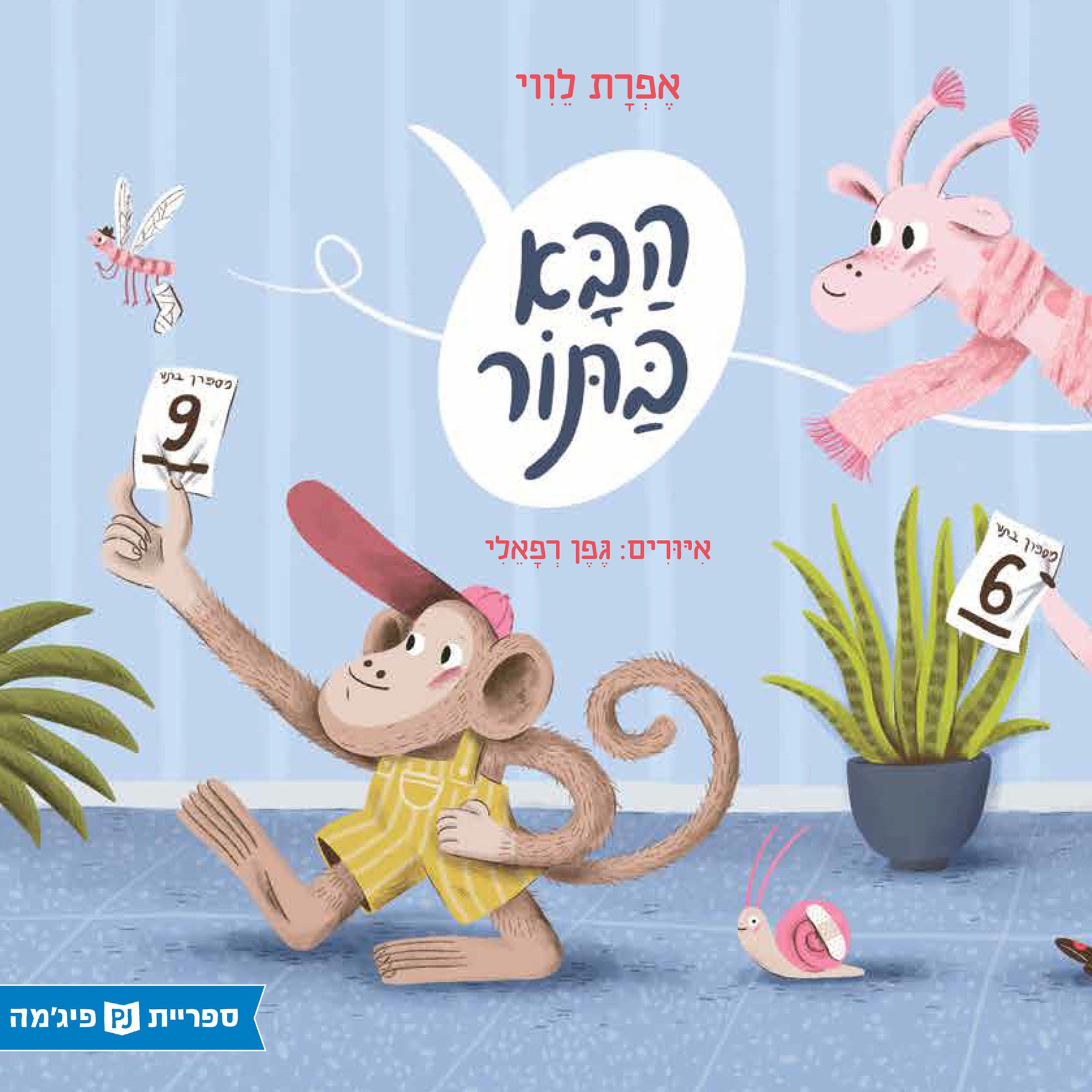 Next in Line
Next in Line 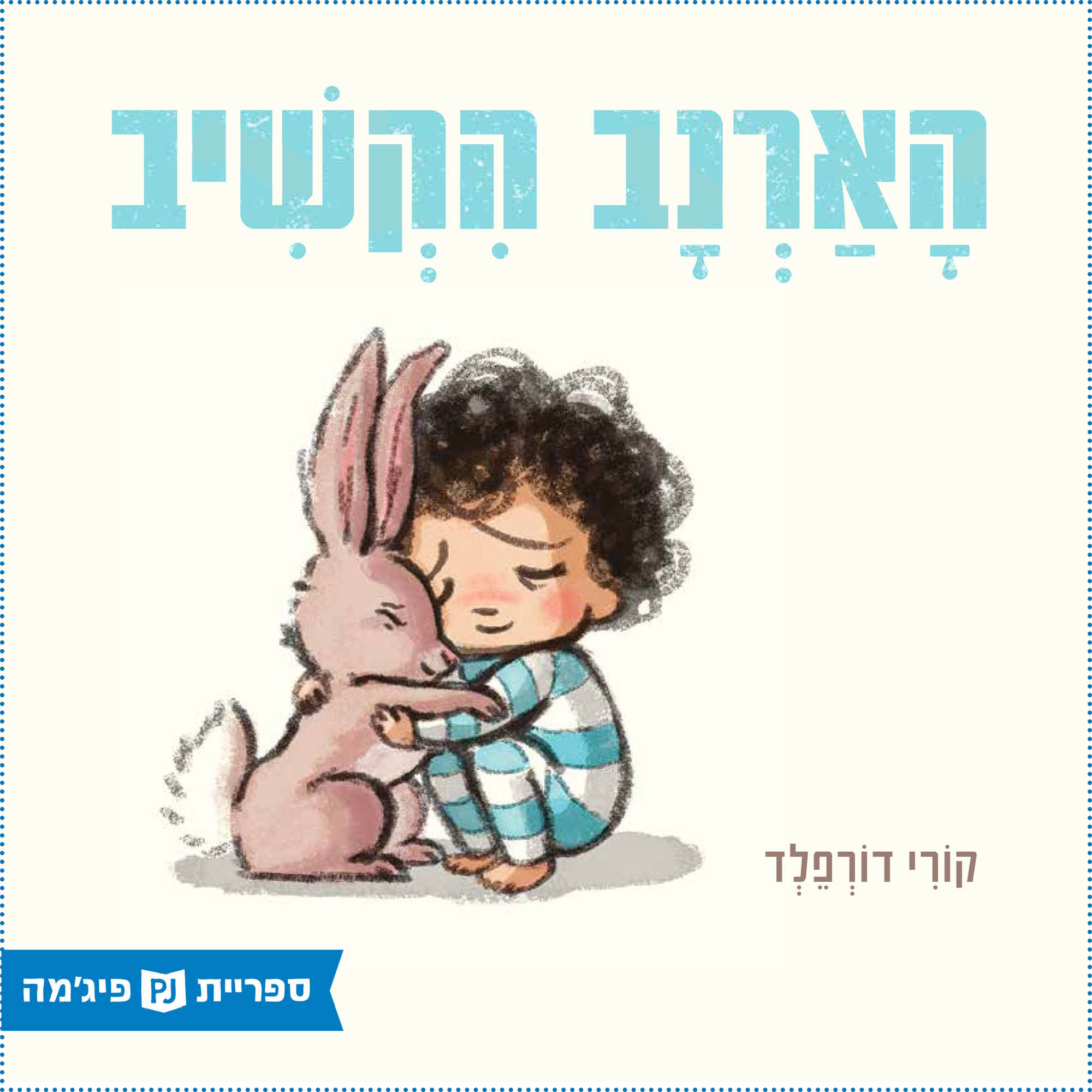 The Rabbit Listened
The Rabbit Listened 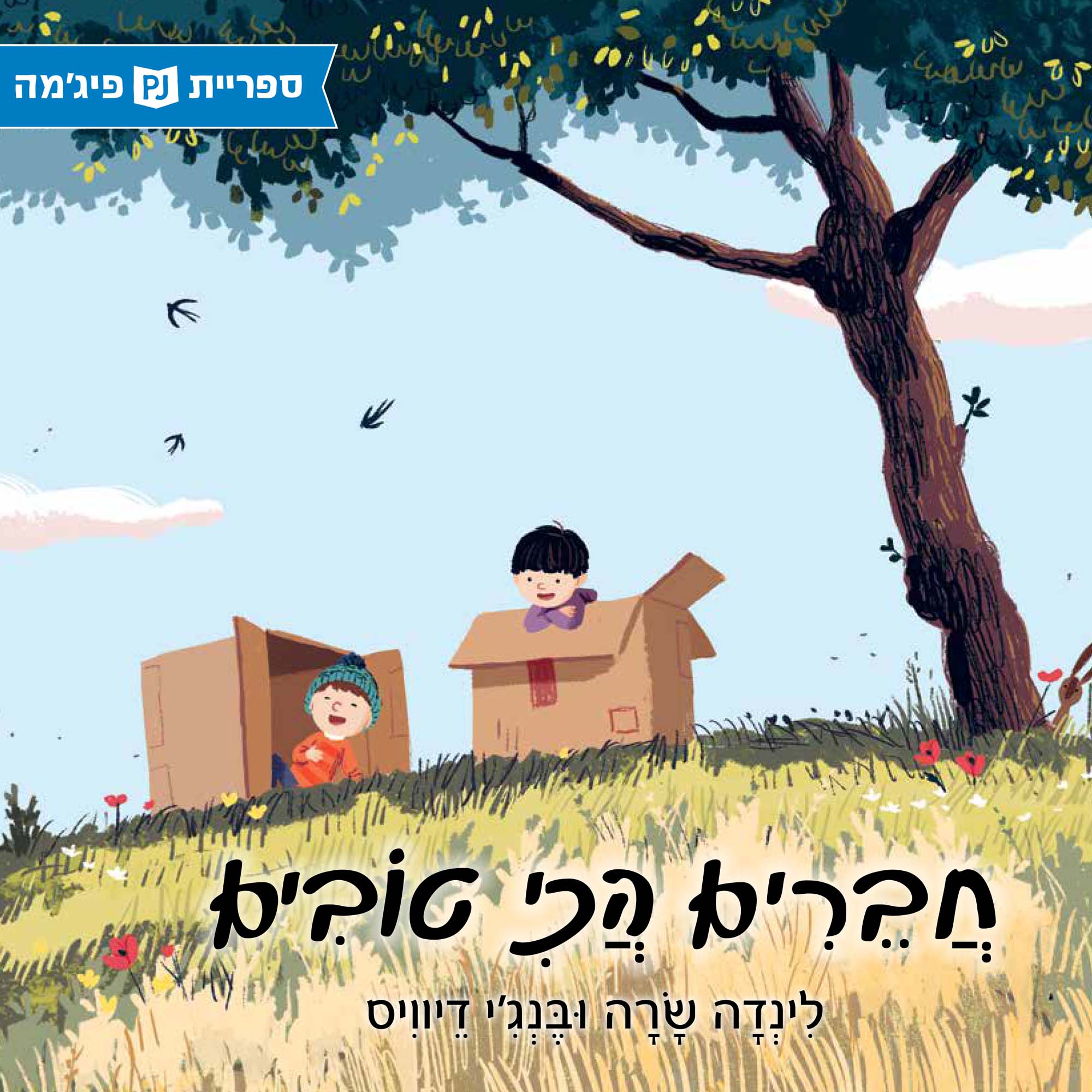 Best Friends
Best Friends 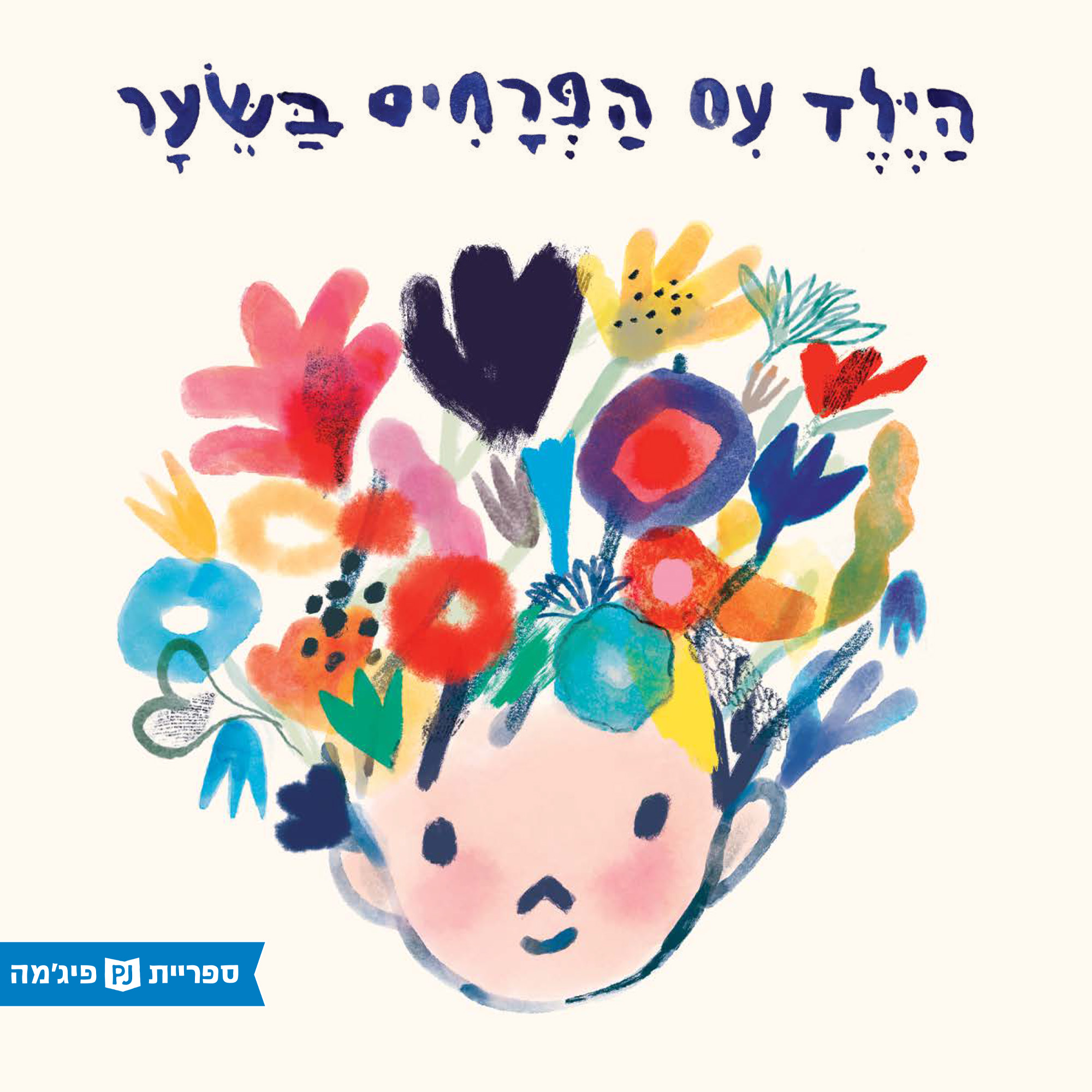 The Boy with Flowers in His Hair
The Boy with Flowers in His Hair 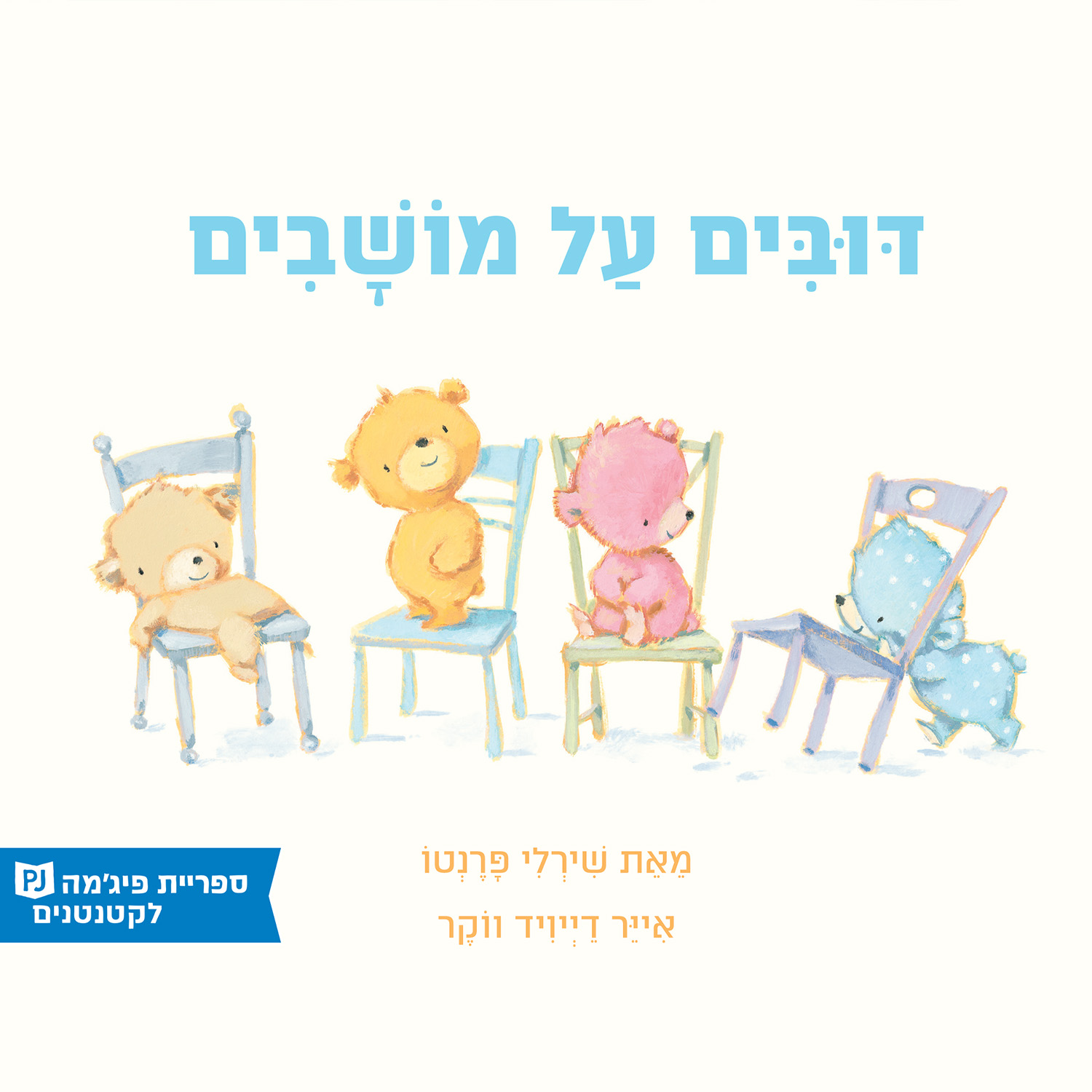 Bears on Chairs
Bears on Chairs 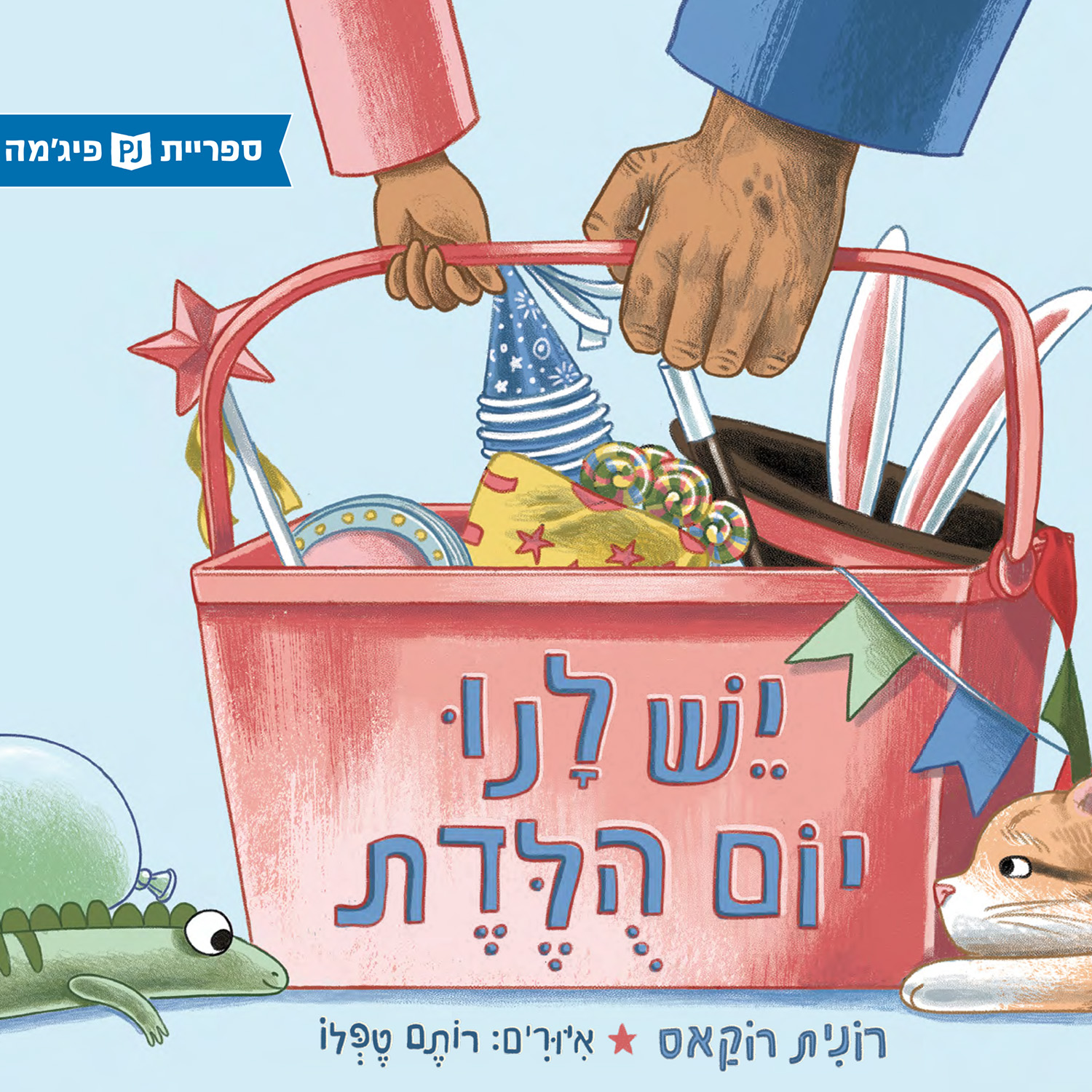 It’s Our Birthday
It’s Our Birthday 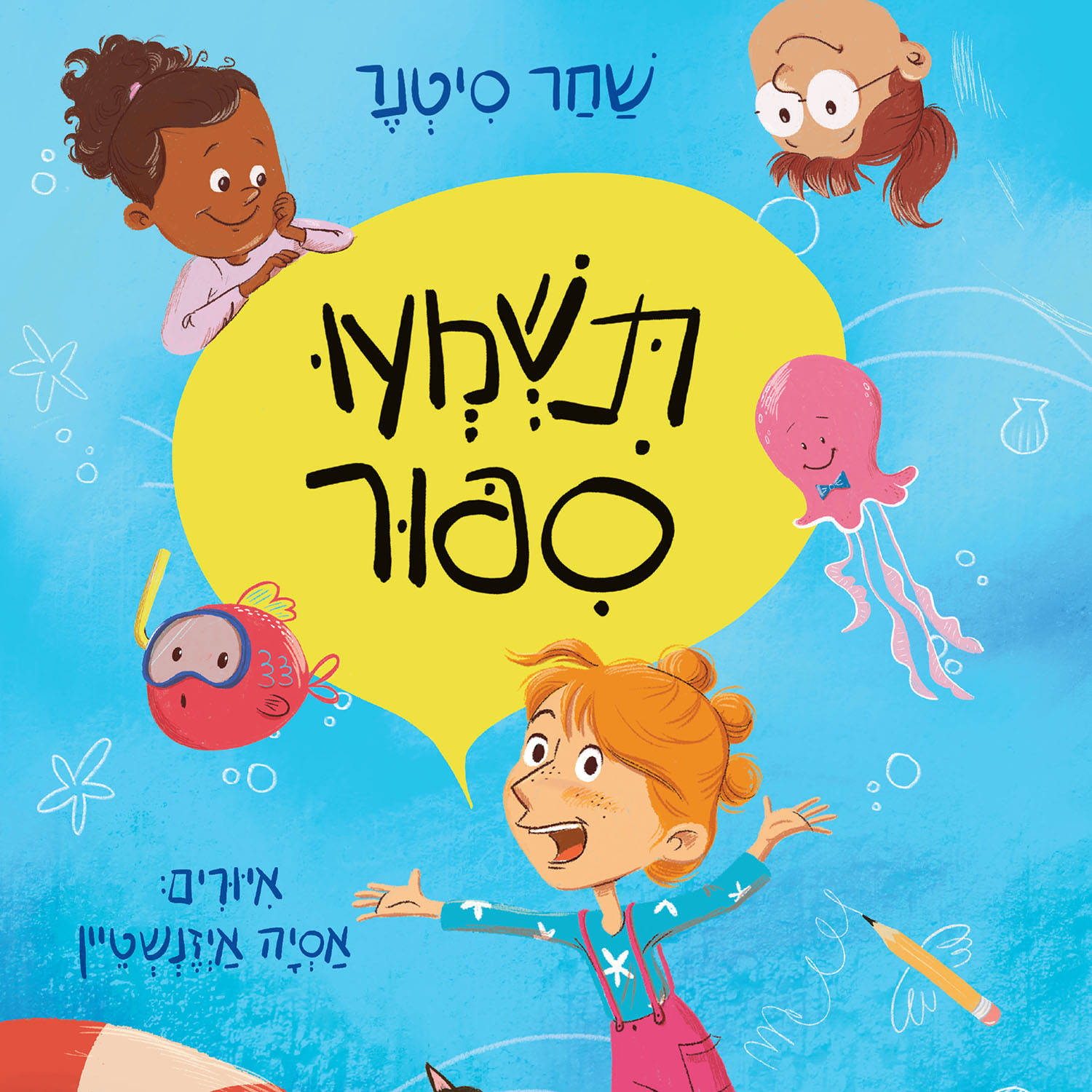 Let Me Tell You a Story
Let Me Tell You a Story  Little Peanut
Little Peanut 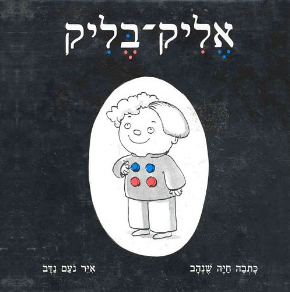 Elik Belik
Elik Belik 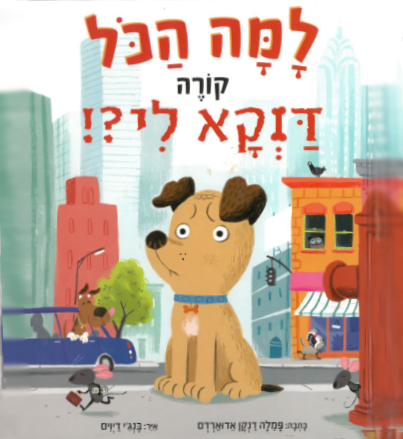 Winston was Worried
Winston was Worried 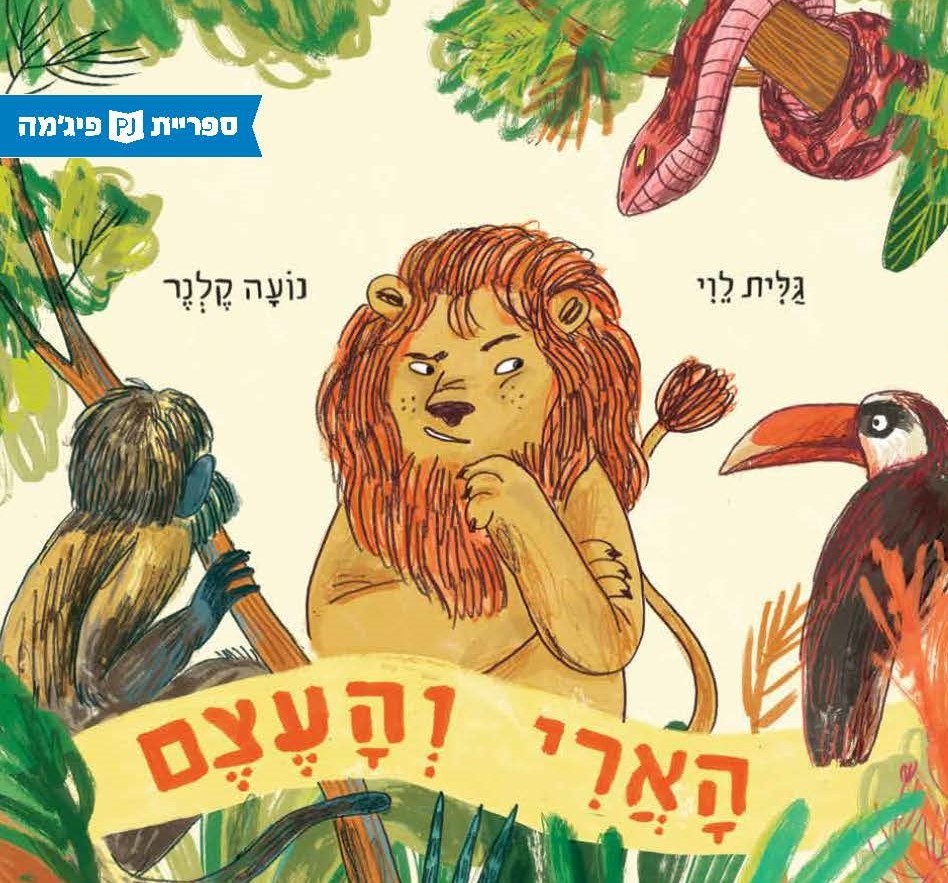 The Lion and the Bone
The Lion and the Bone 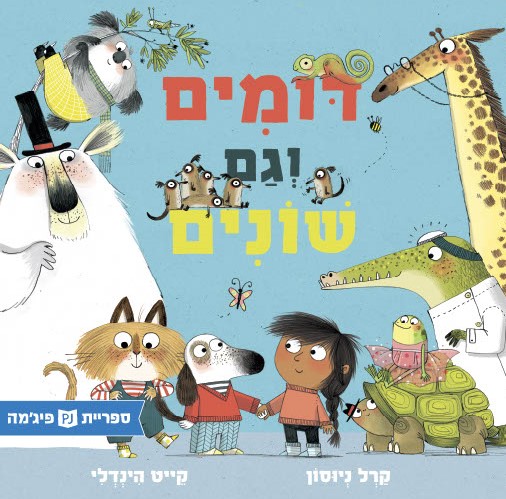 The Same but Different
The Same but Different 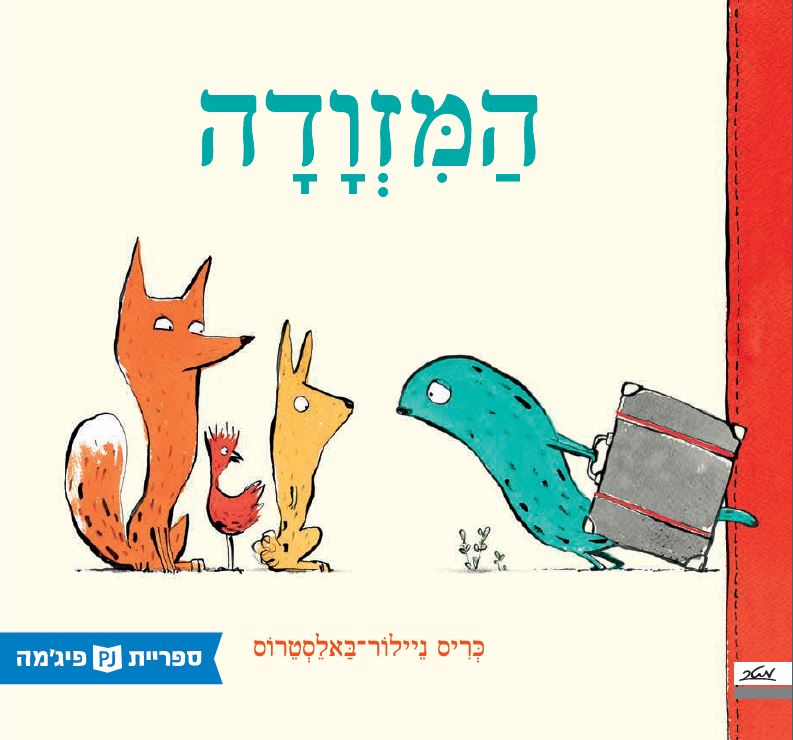 The Suitcase
The Suitcase 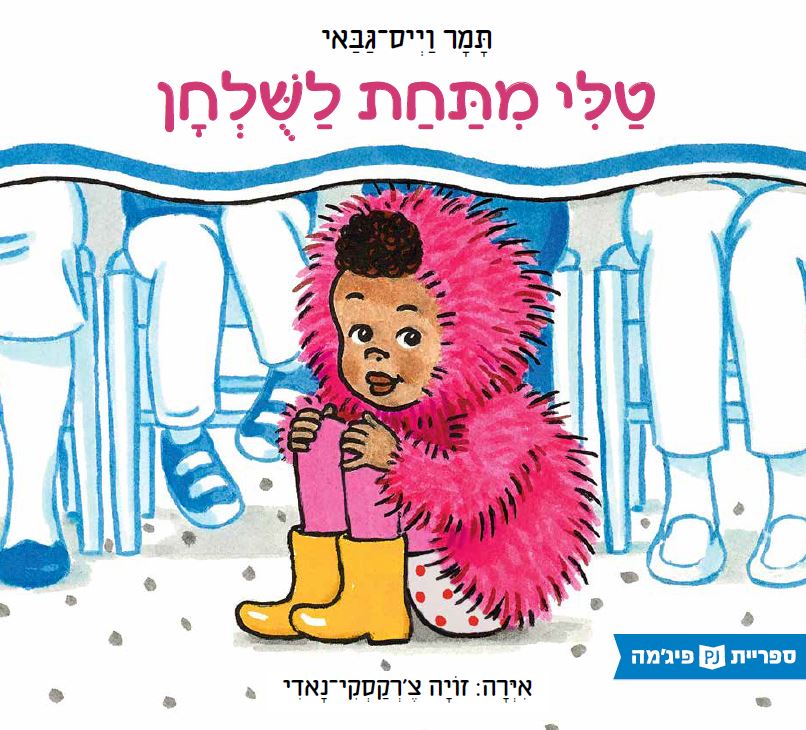 Tali is under the Table
Tali is under the Table 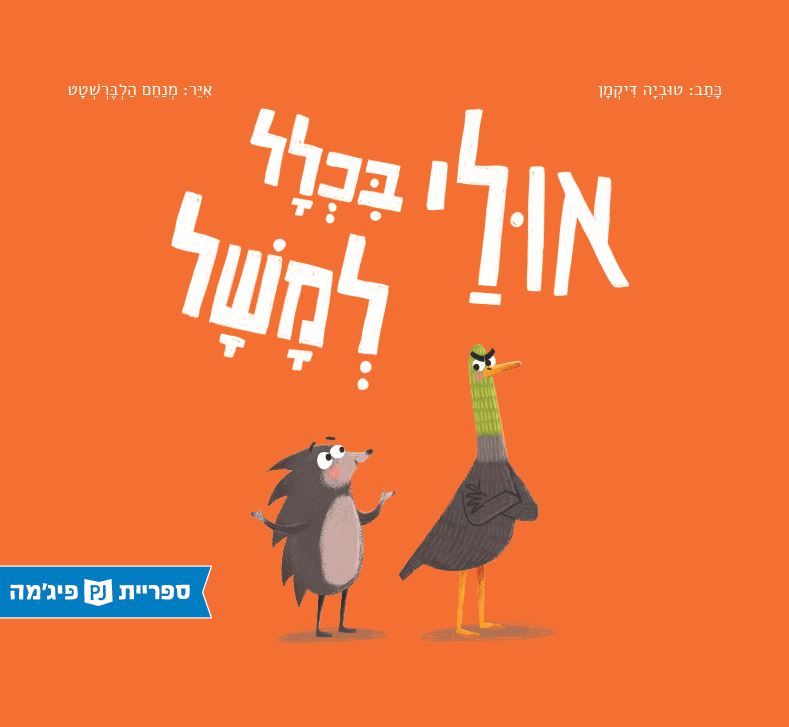 Maybe, Possibly, Perhaps
Maybe, Possibly, Perhaps 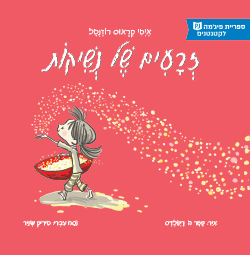 Plant a Kiss
Plant a Kiss 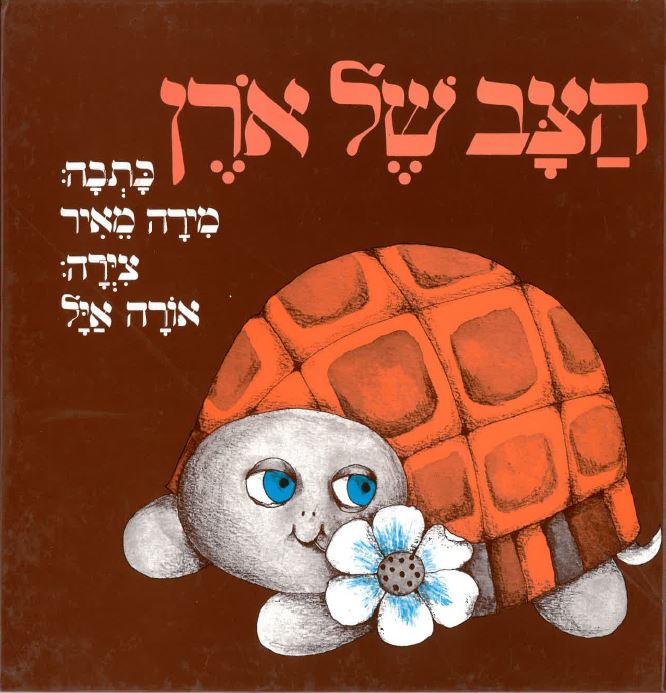 Oren’s Turtle
Oren’s Turtle 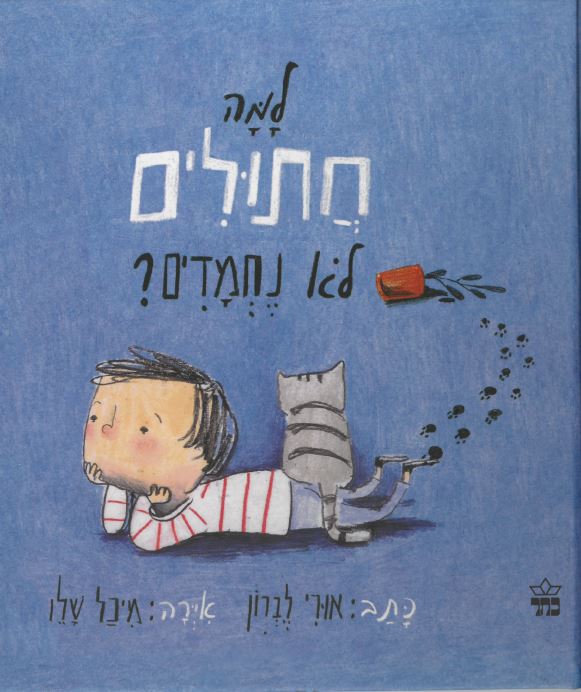 Why aren’t Cats Nice?
Why aren’t Cats Nice? 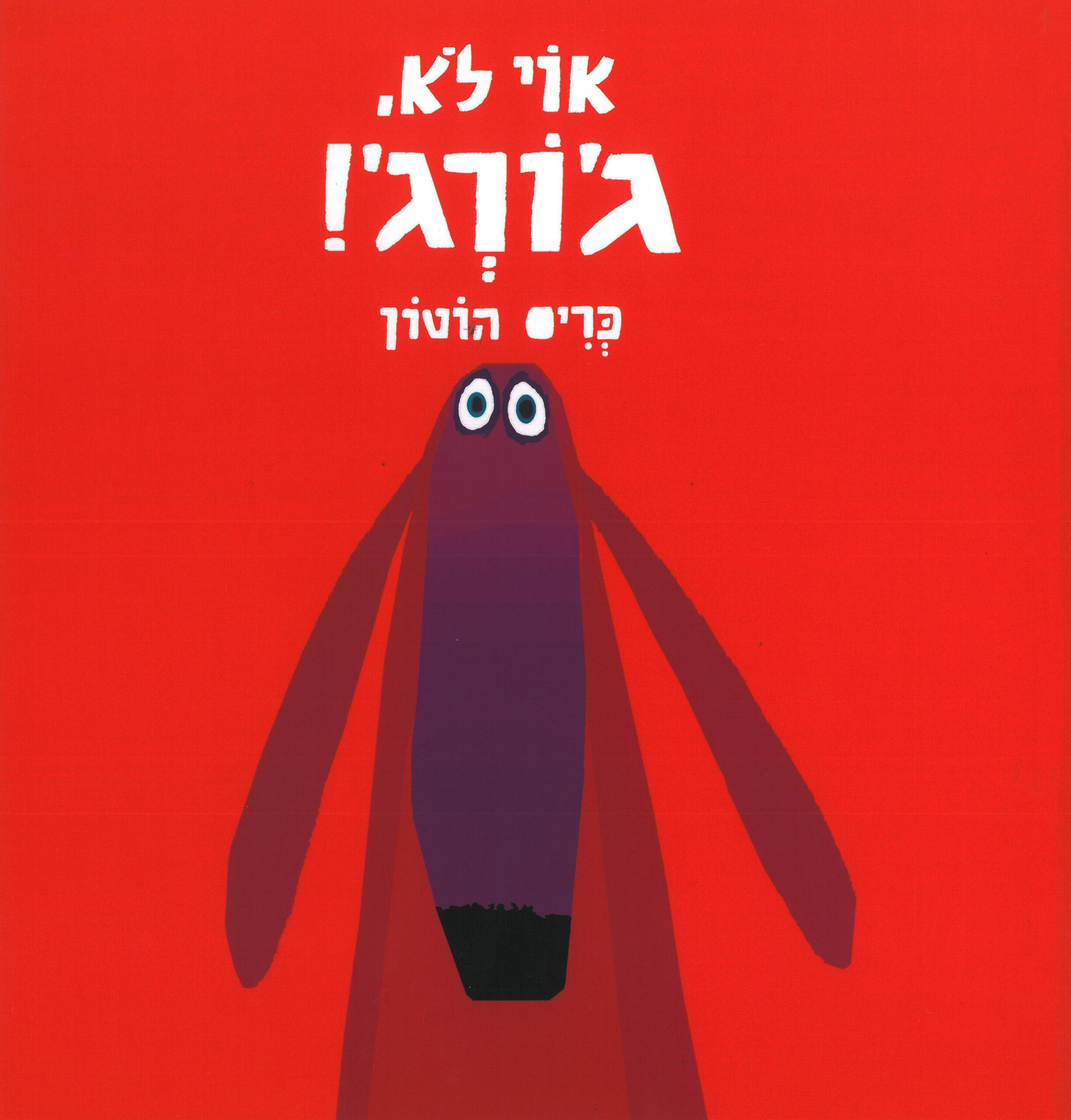 Oh No, George!
Oh No, George! 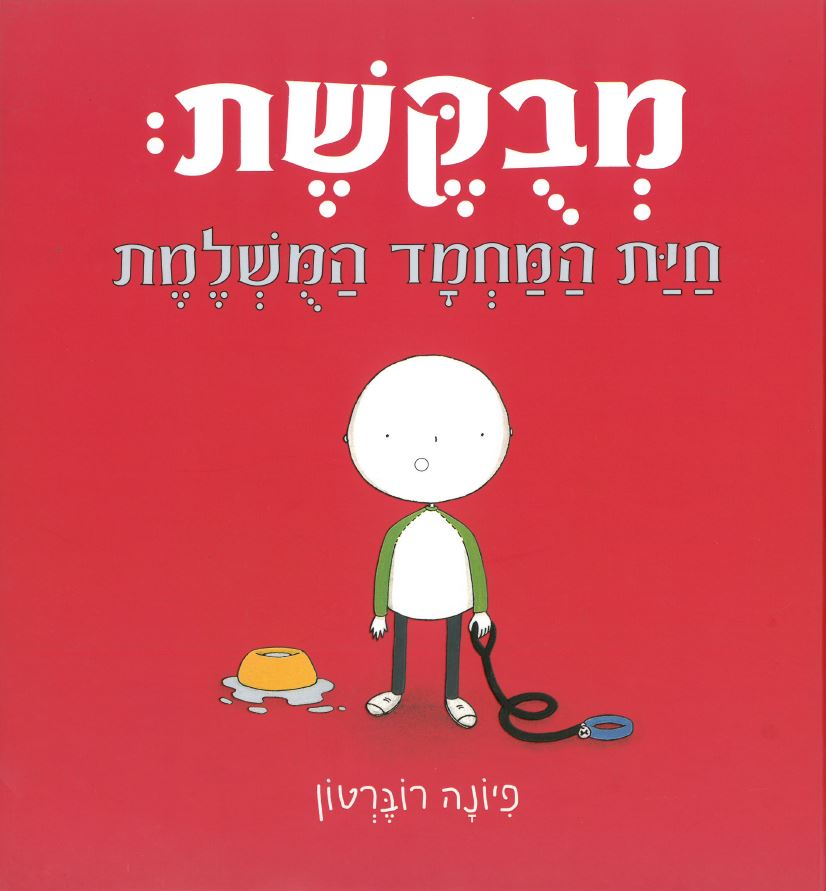 Wanted: The Perfect Pet
Wanted: The Perfect Pet 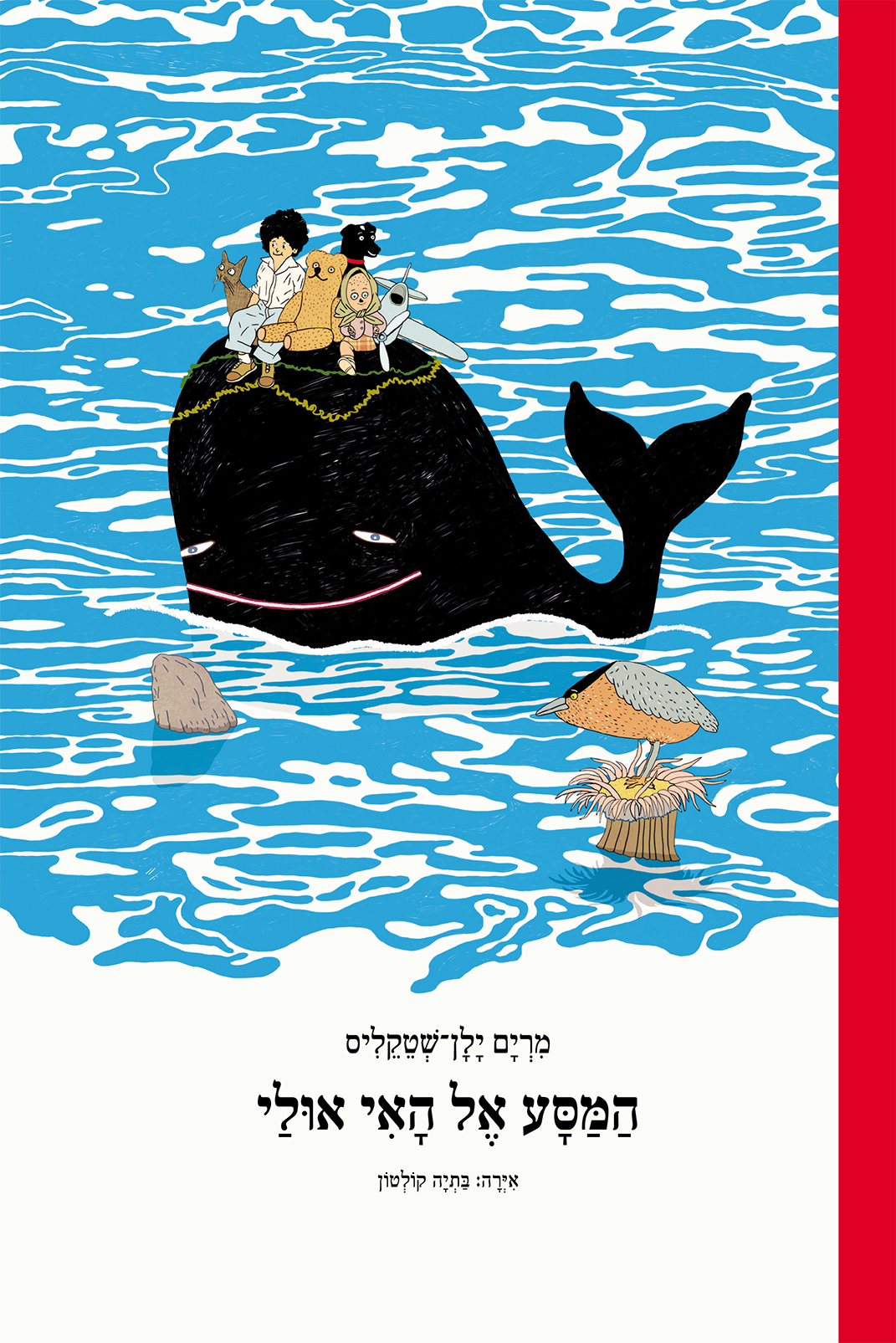 The Journey to the Island of Maybe
The Journey to the Island of Maybe 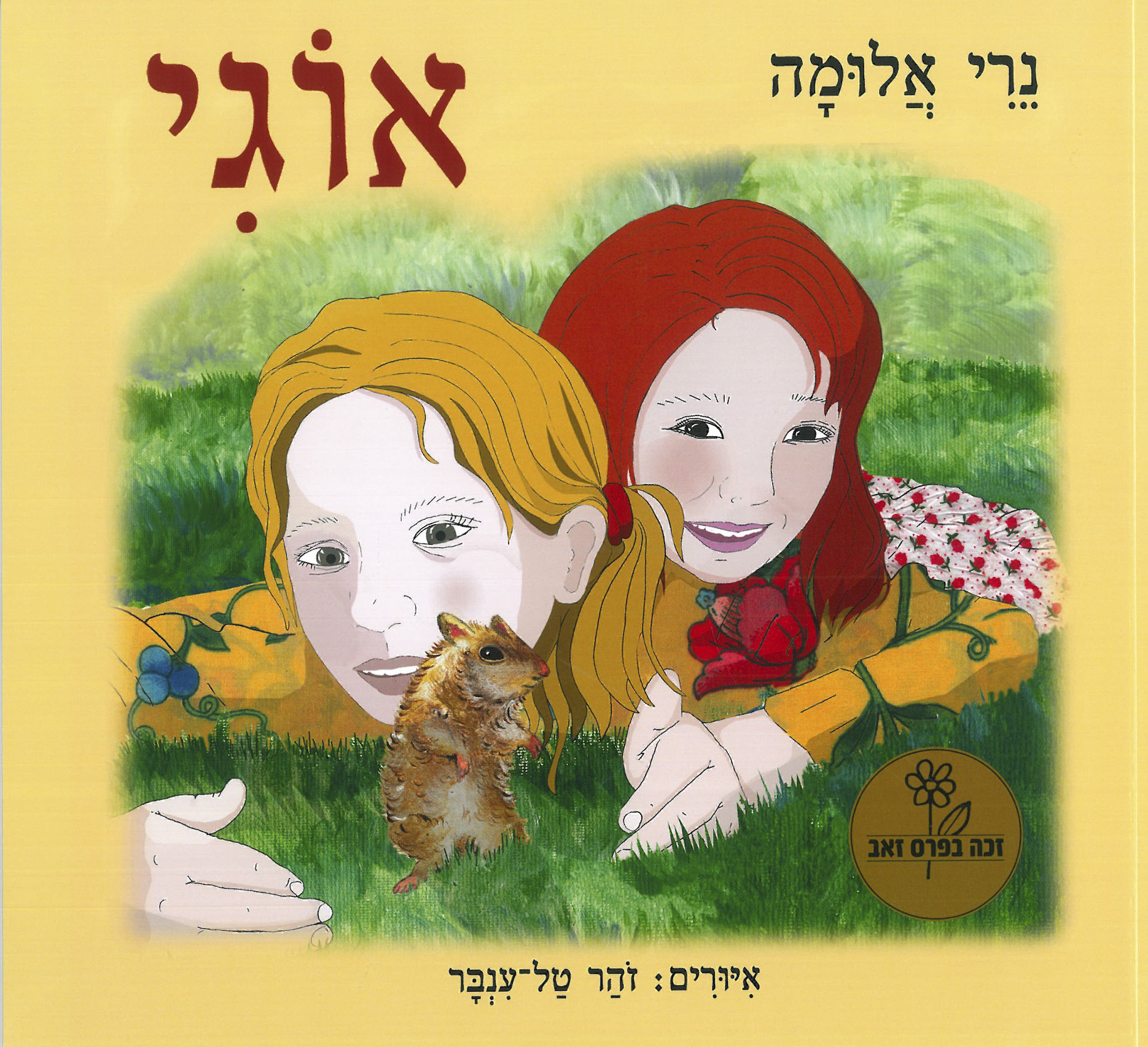 Ogi
Ogi 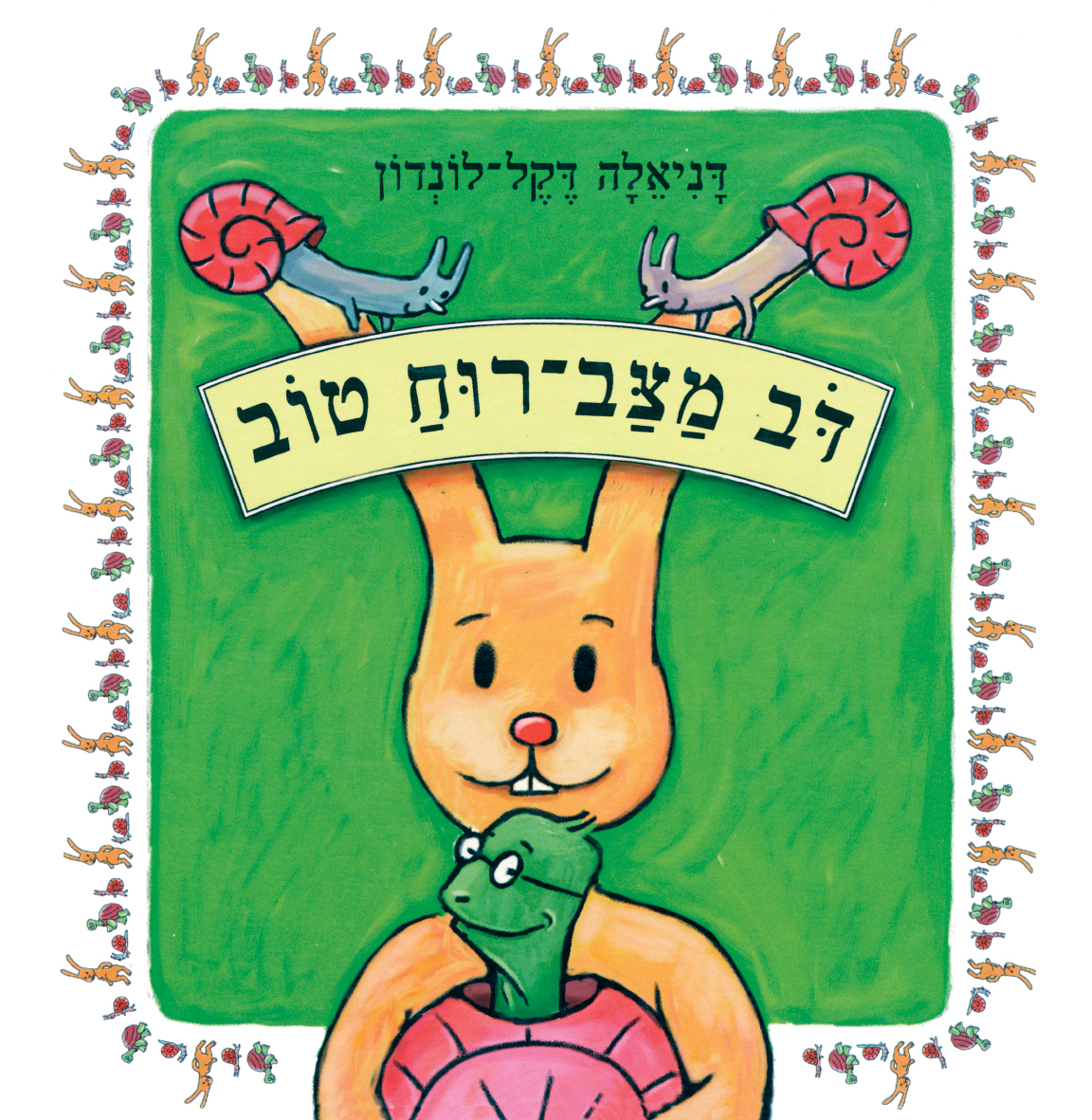 Good Mood Bear
Good Mood Bear 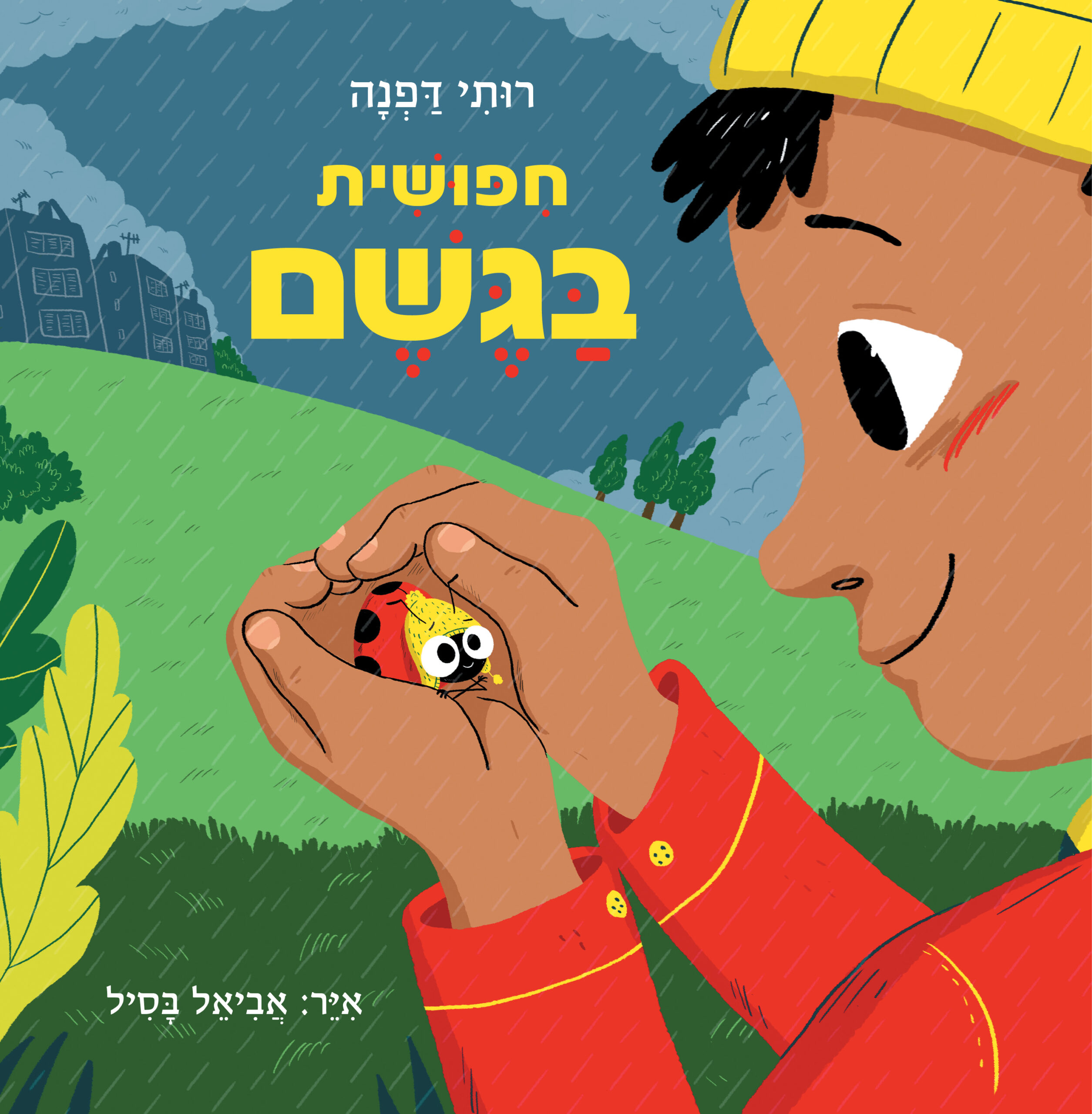 The Ladybird in the Rain
The Ladybird in the Rain 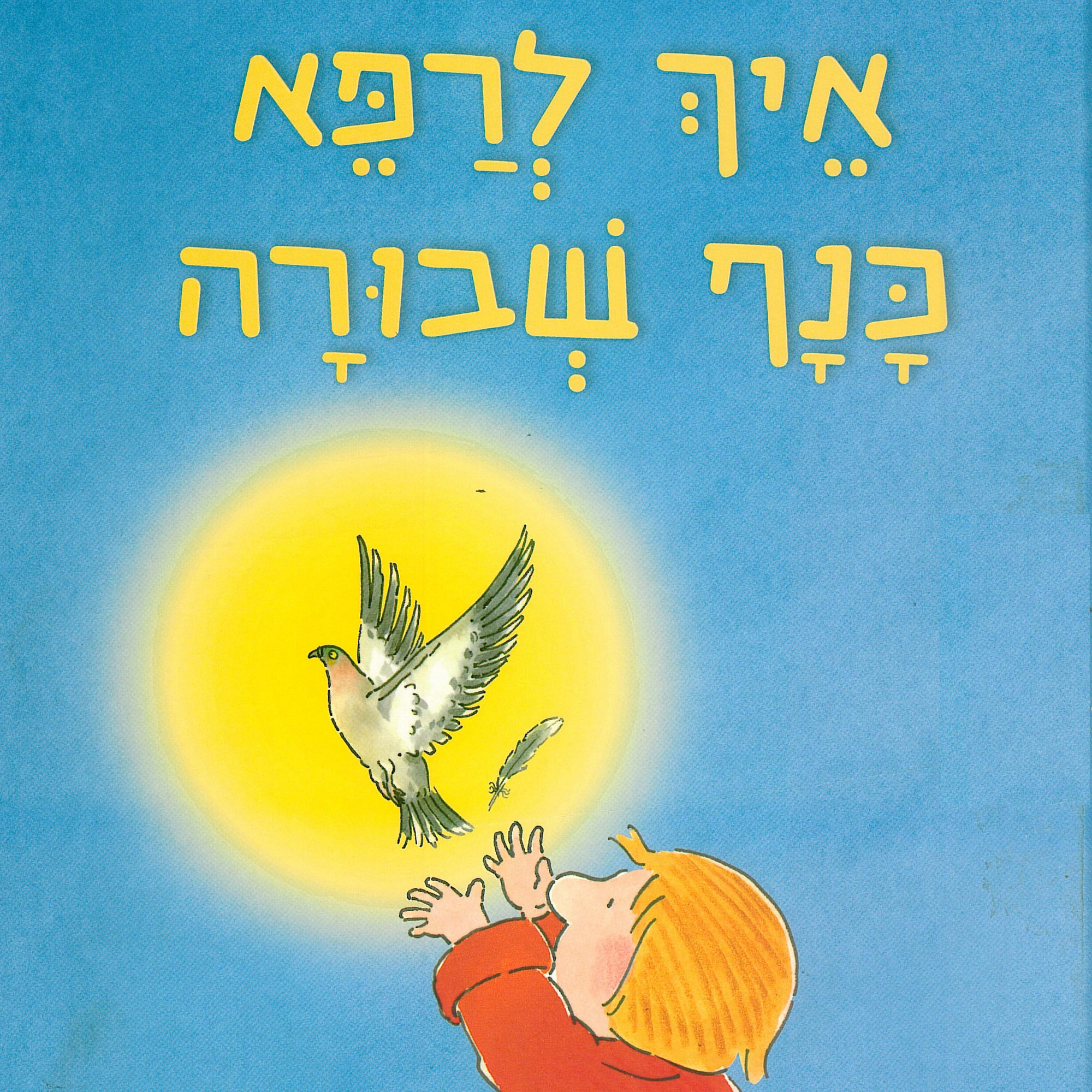 How to Heal a Broken Wing
How to Heal a Broken Wing 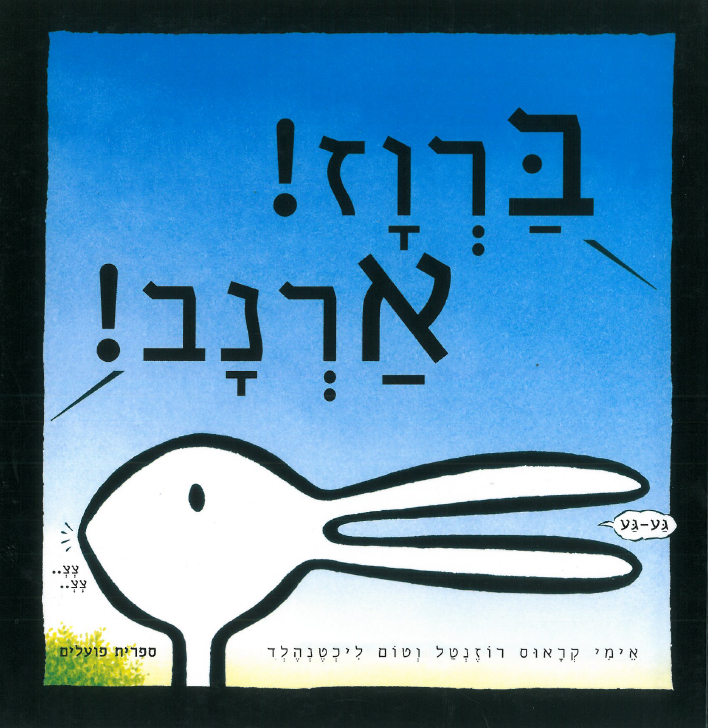 Duck! Rabbit!
Duck! Rabbit! 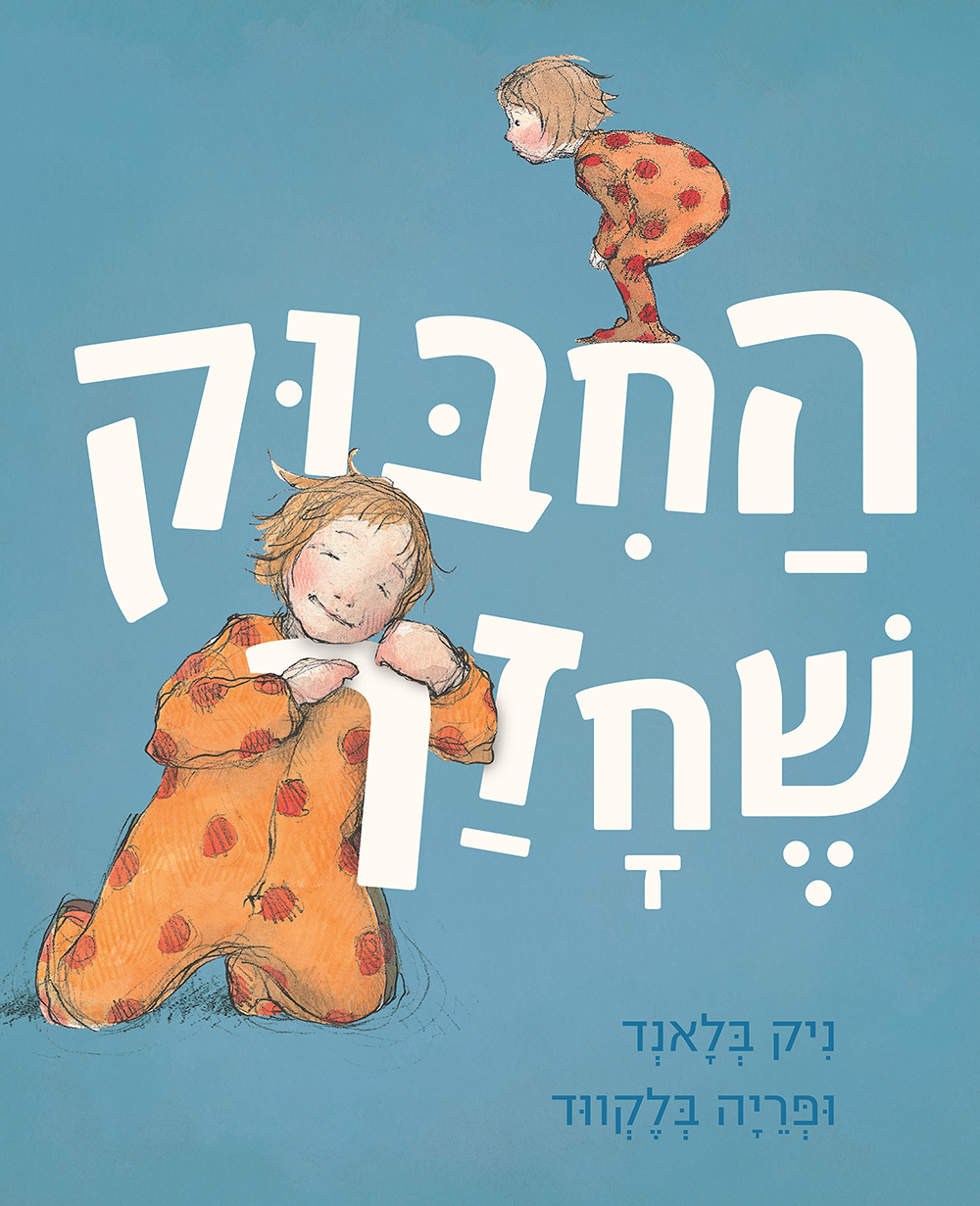 The Runaway Hug
The Runaway Hug 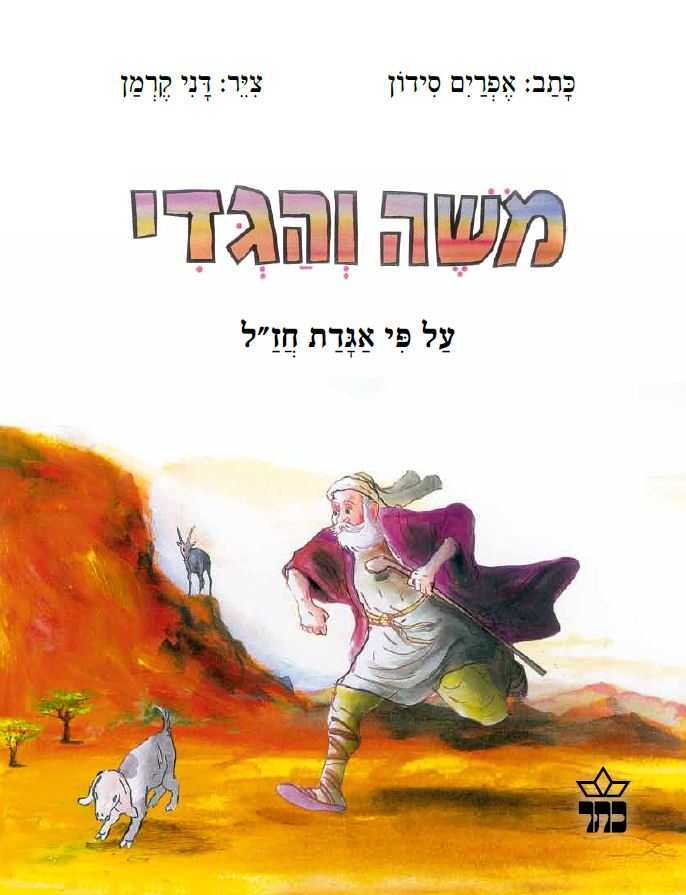 Moses and the Baby Goat
Moses and the Baby Goat 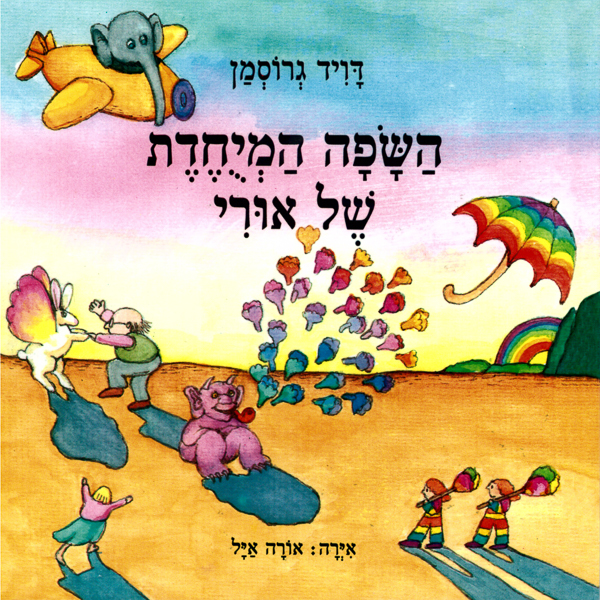 Ury’s Special Language
Ury’s Special Language 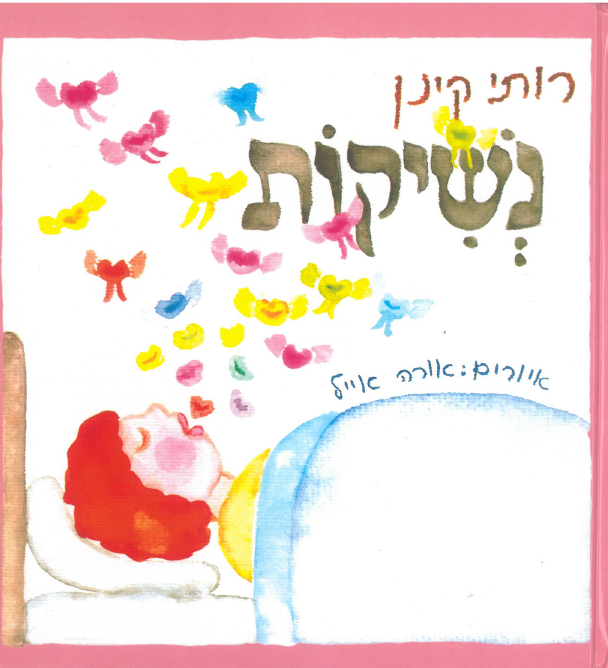 Kisses
Kisses  שֵׁמַע
שֵׁמַע שִׂיחָה
שִׂיחָה מִשְׂחָק
מִשְׂחָק הַשְׁרָאָה
הַשְׁרָאָה קְרִיאָה
קְרִיאָה סִרְטוֹנִים
סִרְטוֹנִים חֵקֶר
חֵקֶר יְצִירָה
יְצִירָה כְּלָלִי
כְּלָלִי הַעֲשָׁרָה
הַעֲשָׁרָה לָצֵאת הַחוּצָה
לָצֵאת הַחוּצָה בִּשּׁוּל
בִּשּׁוּל חֲגִיגָה
חֲגִיגָה





